I land in Taoyuan airport in the early morning. There’s a two and a half hour wait before departure for the flight to Toyama. After a 9 hour flight I was ready to get to the lounge and have a shower followed by some hot breakfast.
There’s a chinese saying: faster is slower. After running to the transfer gate I found that my boarding pass to Toyama was nowhere to be found. I doubled back to the airbridge, then back.
Having found nothing, I went up to the transfer counter. Thankfully I was flying China Airline who also staffed the counter, and I was able to get another boarding pass printed. The luggage receipts on the back of the original pass could not be helped, hopefully I would need them.
The delay took away 30 minutes of precious lounging time, more seriously when I got to the lounge a queue had formed outside, waiting to be checked in. There’s a lot of guests looking for some breakfast before the morning flights.
This was the first time I intend to use the shower at the Plaza Premium lounge. Upon enquiring during check in, the staff handed me a set of towels and pointed me toward the shower rooms in the back.
The shower room is spacious and clean, but decidedly less comfortable affair compared to the Cathay lounges in Hong Kong. The tiles are of a coarse cut and the space emitted a cold atmosphere, the amenities brandless. Basic but adequate.
After the shower I grabbed a bowl of hot beef noodle and sat down in the crowded lounge. For some reason the inflight meals this time were terrible and sat poorly with the stomach. The hot noodle soup was like nectar from heaven, soothing every fibre of the body.
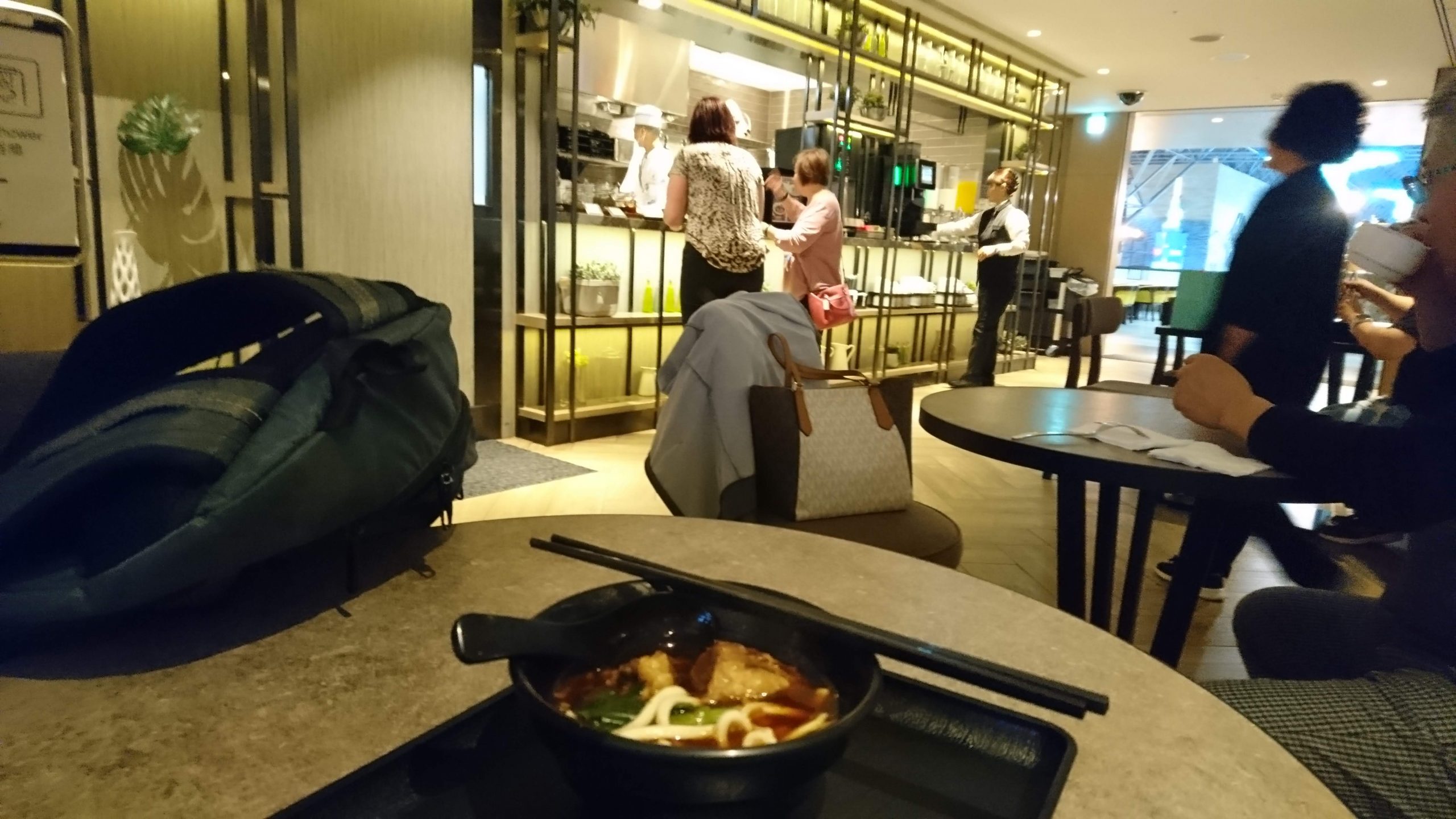
Back in the lounge, I sat down with some coffee and finally began doing some itinerary inventory. I had forgotten to print out my rail pass booking. Why JR West even required rail pass booking continues to be a puzzle, it’s not as if they can run out of rail pass and I highly doubt such bookings would be much use for capacity planning at their ticket office. Either way they were adamant that the booking receipt be printed out. Thankfully the lounge reception were more than helpful, and asked me to forward the booking email to them and printed out for free.
The hour and half spent napping did my spirit much good. I had been feeling quite uneasy about the trip due to the lack of planning but now there is eagerness. Especially since the cherry blossom reports have been favourable.
Despite China Airline operating mostly out of Terminal 2, the flight departed from a gate in the old Terminal 1 wing which took forever to walk. When I finally reached my destination the gate was already open. There was no air bridge, the gate opened onto the apron and a squatted bus awaited.
The plane was parked on the other side of the airport. The ride took so long one might be excused for thinking the driver got lost.
The 737 was without the luxury of its long haul brothers. There were no personal screens, only lonely drop down TsV that presented shows few paid any heed in the short 3 hours journey.
The plane flew over Kyushu, across the Seto Inland Sea and up over Kansai. It cross the Noto peninsula, descended and crossed the coast inland toward Toyama.
Toyama Airport was only a few kilometres south of the city, as we flew over it we were low enough to see the cherry blossoms lining the river banks. If only I had picked a window seat to capture the stunning scene.
Excitement sprung forth, and I peeked out and studied the budding earth. The plane followed the river south into the valley flanked on three sides by sprawling ranges, descending, and descending, passing the airport and continued for what may be minutes, then executed a stunning low level 180 turn. The bank so steep and so long that it felt the tip of the wing might touch the tall lone pines guarding the intersecting fields.
The plane exited the turn aligned to the flow of the water and within seconds landed on the runway built on the riverbed. Driving to the end of the runway, the plane did another 180 and drove back up to the terminal halfway up the runway. The riverbed was so narrow there was no space to put in a taxiway and airplanes had to use the runway itself to and from the ramp. Not often do I get to fly into small regional airports and experience such memorable approaches.
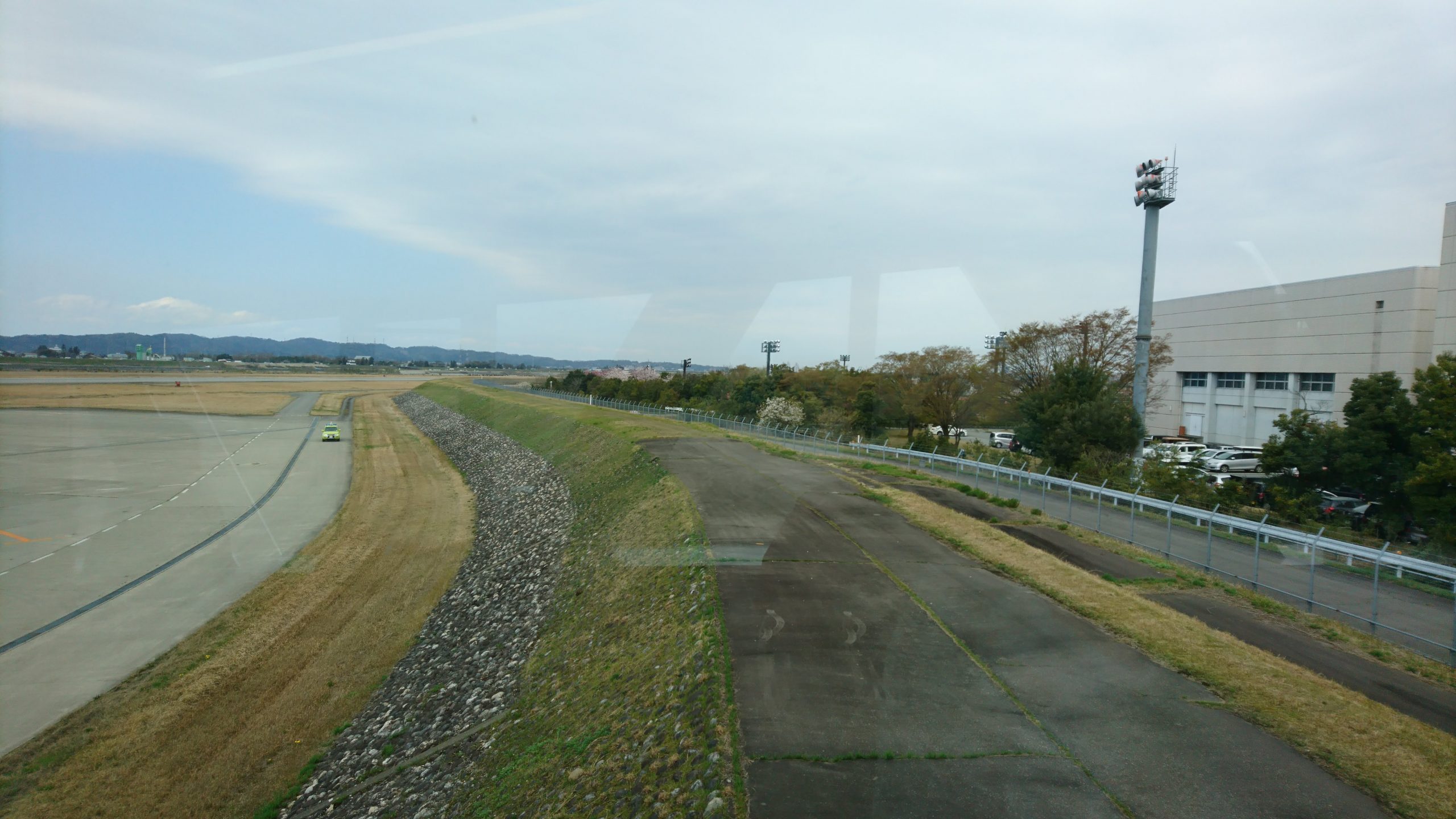
Passing customs went smoothly. Less than 20 minutes. I stood at the entrance of the small airport concourse. The concourse was narrow and long, with the international end at one end and the domestic at the other. The international end could barely be considered a concourse, closer to an anteroom where the only fittings were a makeshift visitor info kiosk and a sim-card vending machine.
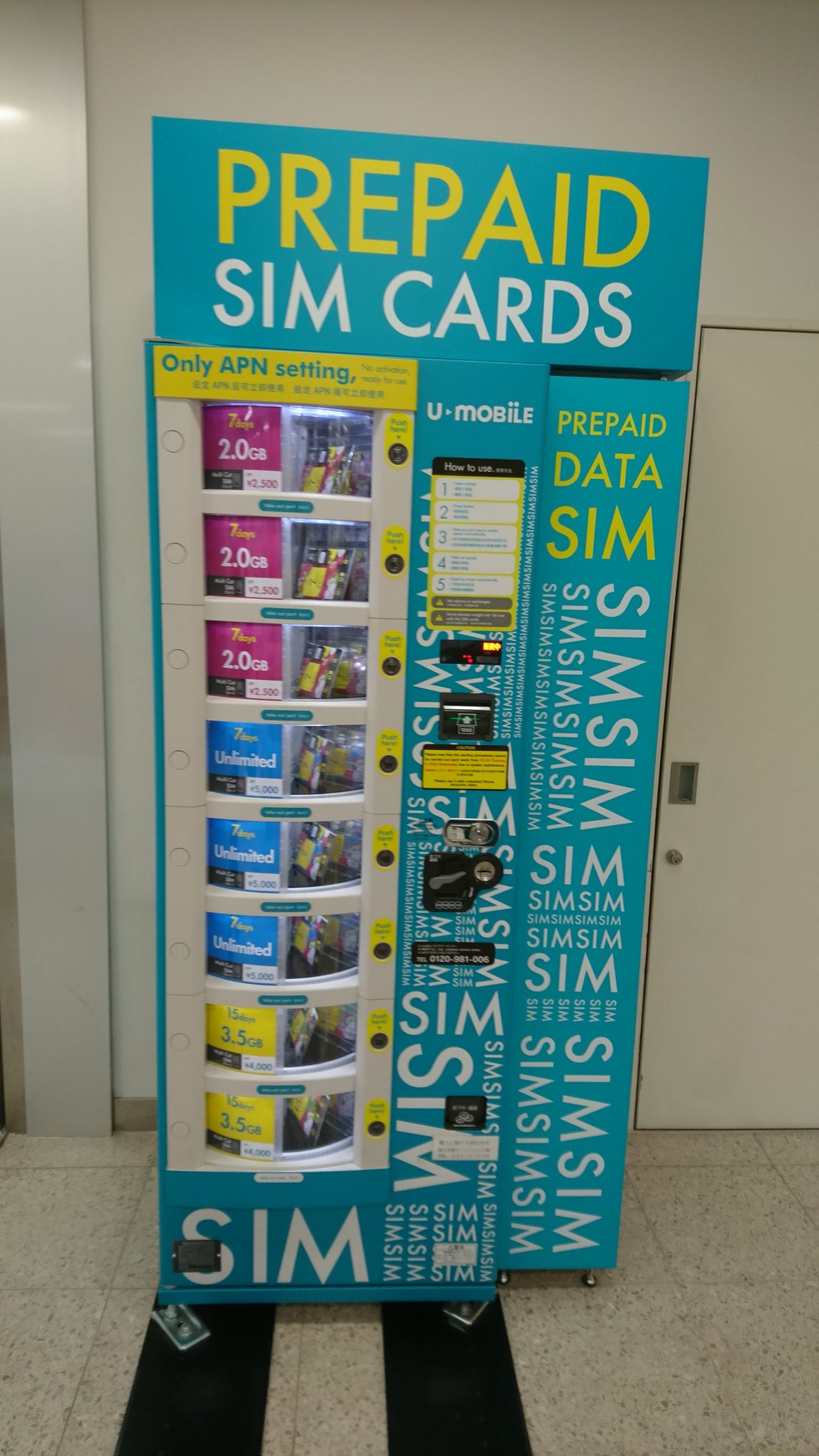
The sight of the vending machine was of great relief. The umobile website did suggest that they sold sim-card at the airport but one could never be too sure, could have easily sold out or cancelled recently without notice. There were several backup options of course. The souvenir shop upstairs also sold So-Net sim cards, then the convenience store at the north side of Kanazawa station, though the sim card plans for either of the backup choices were not ideal. If all else fails, I can attempt to survive on wifi till Kyoto where sim cards are readily available at Bic Camera and other shops, not an ideal scenario of course but not totally out of the realm of possibility.
The sim-card on sale was not the same kind I was expecting. The umobile sims advertised on the website, the one I had used in my last trip, had daily bandwidth quotas that throttled speed if exceeded and resets every day. The ones sold by the vending had a single data cap for the entire validity period.
The daily quota ones were better in that if I blew the quota by accident, it’ll only affect me for the rest of the day, while the single quota one would put me at a slow speed for the rest of the whole trip.
So long as the quotas weren’t used up, which for me was to be expected, the plans differed little. I exchanged a 10k note into 1k ones with the info desk lady and bought my sim.
The info desk mostly stocked flyers about Toyama. The Kurobe ranges and the coastal areas, the Gokayama thatched hut village, and Toyama city itself. I thanked the lady and went on my way to explore the concourse.
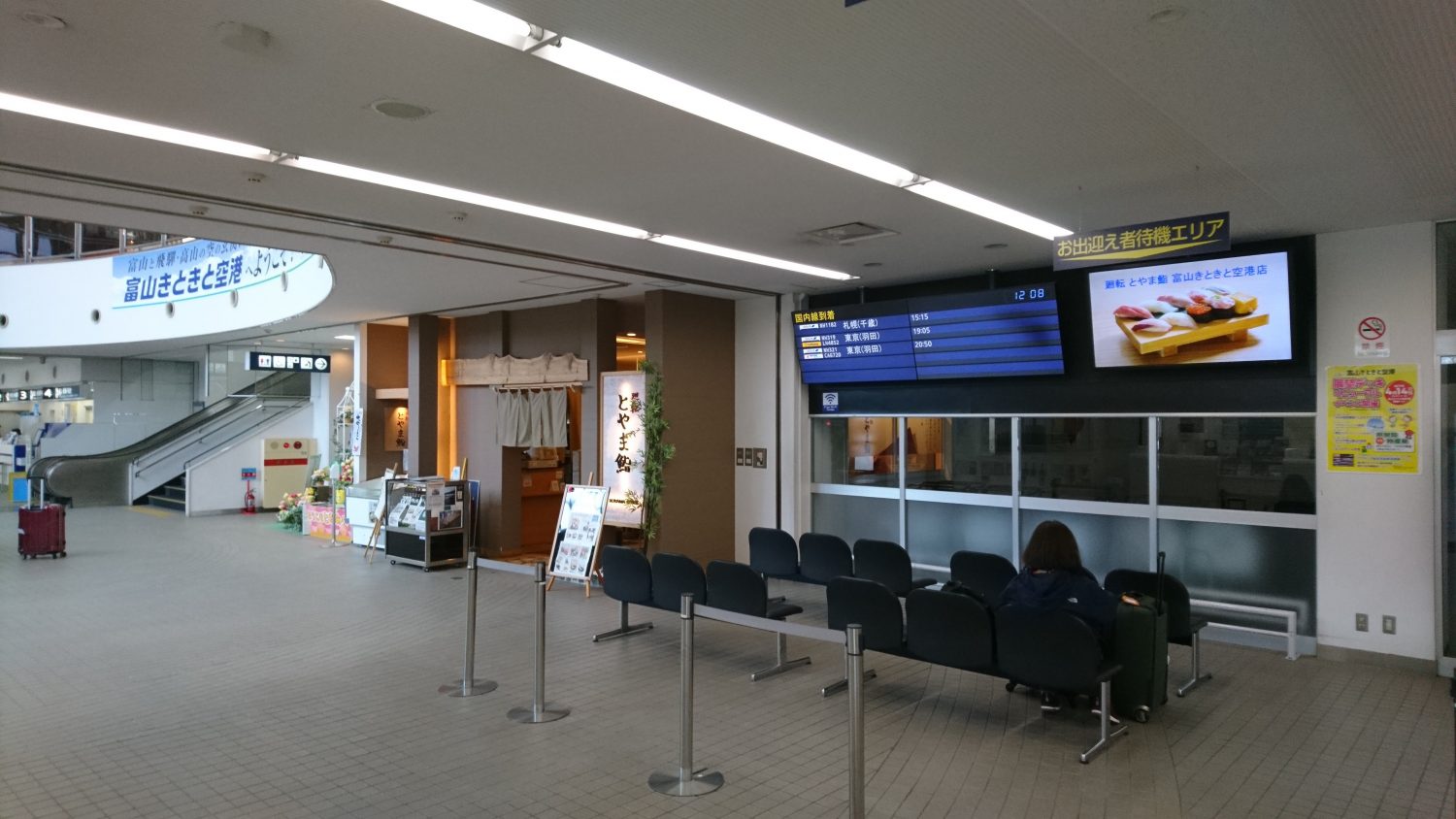
The next bus to Toyama city was not due for another hour, there was time enough for me install and activate the sim card then check out what few shops and restaurants the place had to offer.
For filling one’s stomach, there’s a noodle shop, a western pasta pizza restaurant, a cafe and a sushi restaurant. None of which enjoyed much customer at time.
A few fellow Taiwanese tourists was already browsing the general souvenir shop, looking through the aisles stocked with local produce and sweets, sake, travel items such as books and lotions. On one pillar was a poster advertising the So-Net sim cards. There were some attempts to appeal to foreign tourists, if the effort seemingly lacking focus. Doubtfully enough foreign tourists to make every label multilingual, not to mention many of the tourists likely aren’t skilled in English.
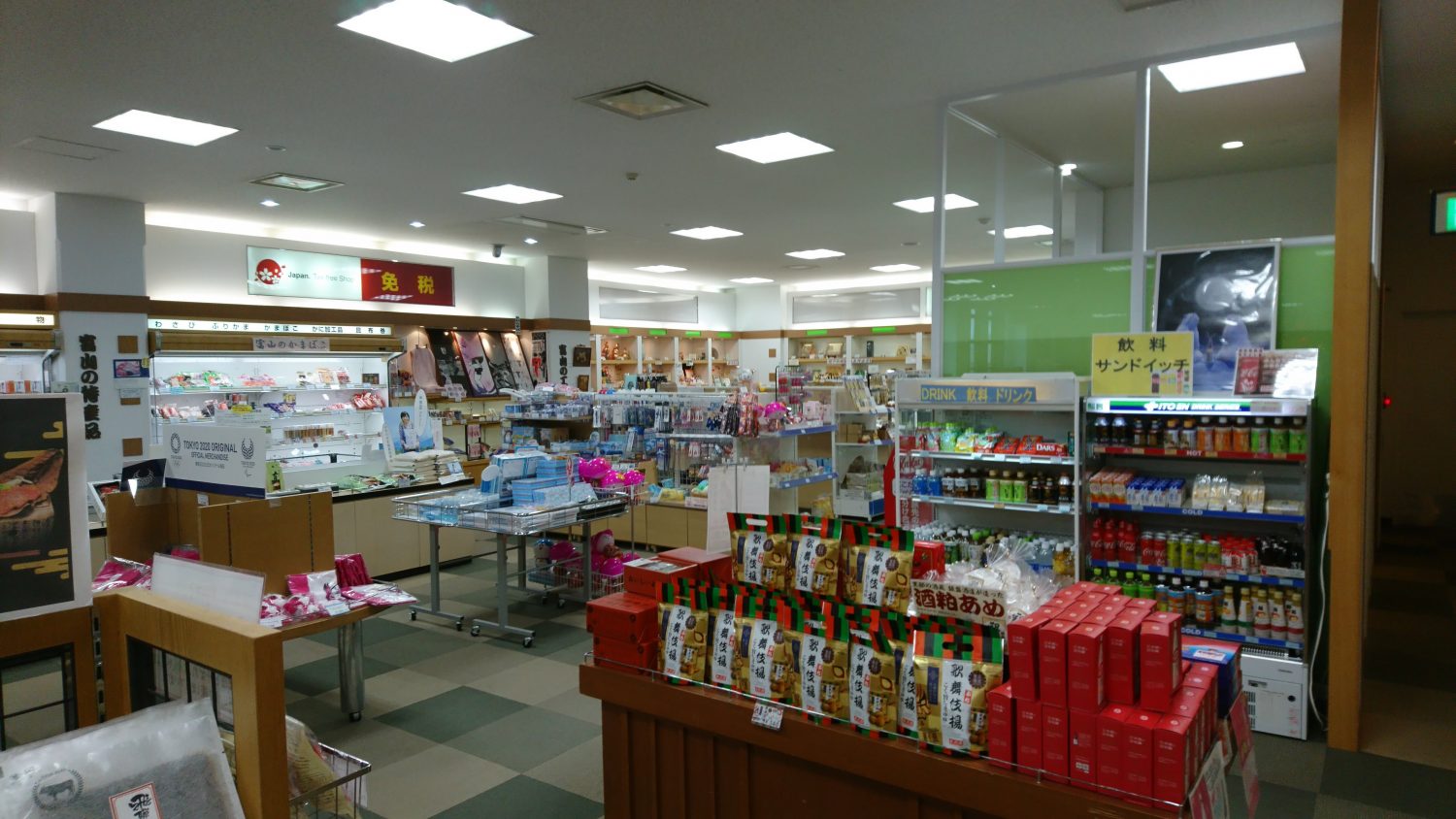
Everything held an earthly small town feel, down to the oversized bus ticket vending machine.
A long line had formed by the kerb ten minutes before the bus was due to arrive. There were much fewer people than expected, the others must had left on tour buses. Each had with them giant suitcases that as soon as the bus showed up, it was obvious there was no way they would all fit in the underside compartments.
The bus had plenty of seats, the driver waved the rest onto the bus and we placed the luggage in the vacant seats next to us.
Toyama airport was fairly close to the city center as far as airports went, the bus ride takes only 25 minutes.
As we drove along the main road the surroundings immediately struck me as different than other areas of Japan that I’ve been to. Toyama was not very dense. It was not barren lands nor endless rice fields, nor was it rows of residential houses. Restaurants and shops and other businesses lined both sides in spacious plots devoting plenty of spaces in front or to the sides of the buildings for parking. The stereotypical Japanese cities were very compact which favoured pedestrian traffic, here things were obviously catering to people who drove. It’s a trend I’ve read much of; shopping streets in traditional city centers are losing to suburban malls and shops as people’s preference shifts to driving, perhaps especially so on the Japan coast where snowfall is heavy.
We entered the city centre, pass the light rail tracks that looped the main commercial district. The city was much more lively than I expected and I wondered if I should have spent the first night here as planned initially.
The view suddenly widened up and there was a unified gasp, a split moment of silence descended followed by audible excitement.
Behind a wide moat was the long wall of a castle braced by clouds of cherry blossoms in perfect full bloom befitting the front cover of calendars.
The bus made a stop pass the canal where the cherry blossom festival was taking place. There was an urge to jump off the bus then with all my luggage and walk to the station later.
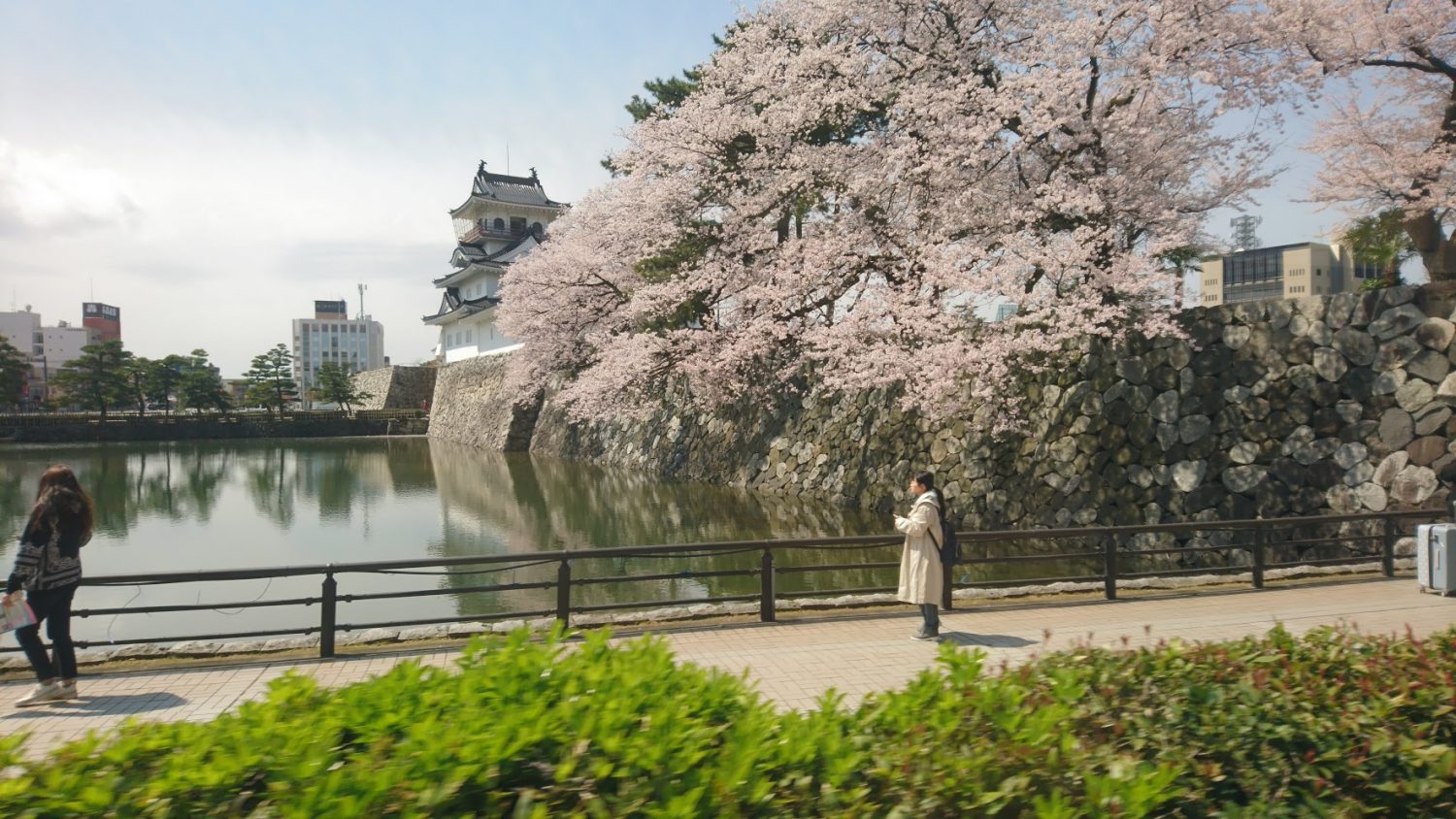
I held back. If Toyama, which was not known for cherry blossoms was like this, then the flowers was going to be even ten times better in Kanazawa. I had to get to Kanazawa early. I had not built in allowance for cherry blossoms and unconsciously I was already shifting things around in Kanazawa to make time.
Before Toyama station was also a sparse row of cherry blossoms. The highschool students looked on with curious understanding at the unloaded bus full of tourists snapping away at a few lonely trees, enamoured by what to them must be ordinary and unworthy of mention.
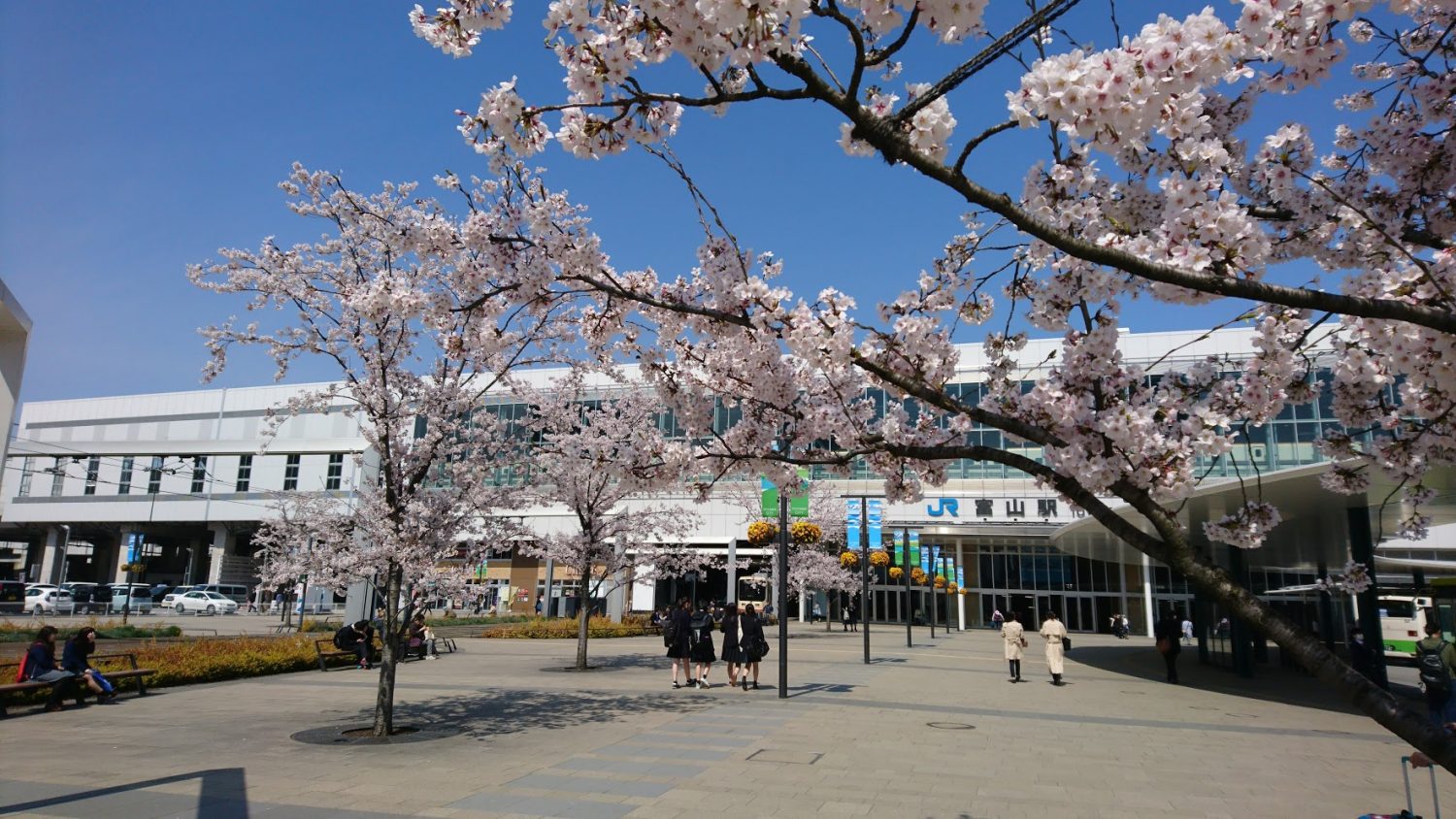
I allowed myself a few minutes of indulgence and reigned back the excitement. Had to get moving. Before deciding what to do for the rest of the day I had to get my rail pass, once that was done there would be a clear idea how much time there remained in the afternoon.
Getting in and out of the ticket office took maybe 10 minutes with minimal waiting. It was just past 1 in the afternoon, the next shinkansen to Kanazawa was just a few minutes away.

Originally I had planned to head directly to Kanazawa but upon seeing the time table I decided against it. The train after next was about 40 minutes away and still puts me at Kanazawa a little after 2pm; having lunch here is better than having to snack on riceball on the train plus still having to spend time looking for a place to eat after reaching Kanazawa.
Up till about a month ago I had planned on spending the afternoon in Toyama and had done some research on its restaurants. Though I did not plan to go to the canal park and the Starbucks there, nor the castle remains, I immediately knew where to go for lunch.
Adjoining the station was a shopping plaza that sold Toyama specialties as well as several restaurants. One of them, the Shiroebiya specialized in Toyama’s famous white shrimps, their signature dish a rice bowl topped with fried shrimps.
The place was much smaller than the photos suggested. There were maybe six tables, plus about eight or nine counter seats. There was only one other person at the counter so I asked to sit at a table.
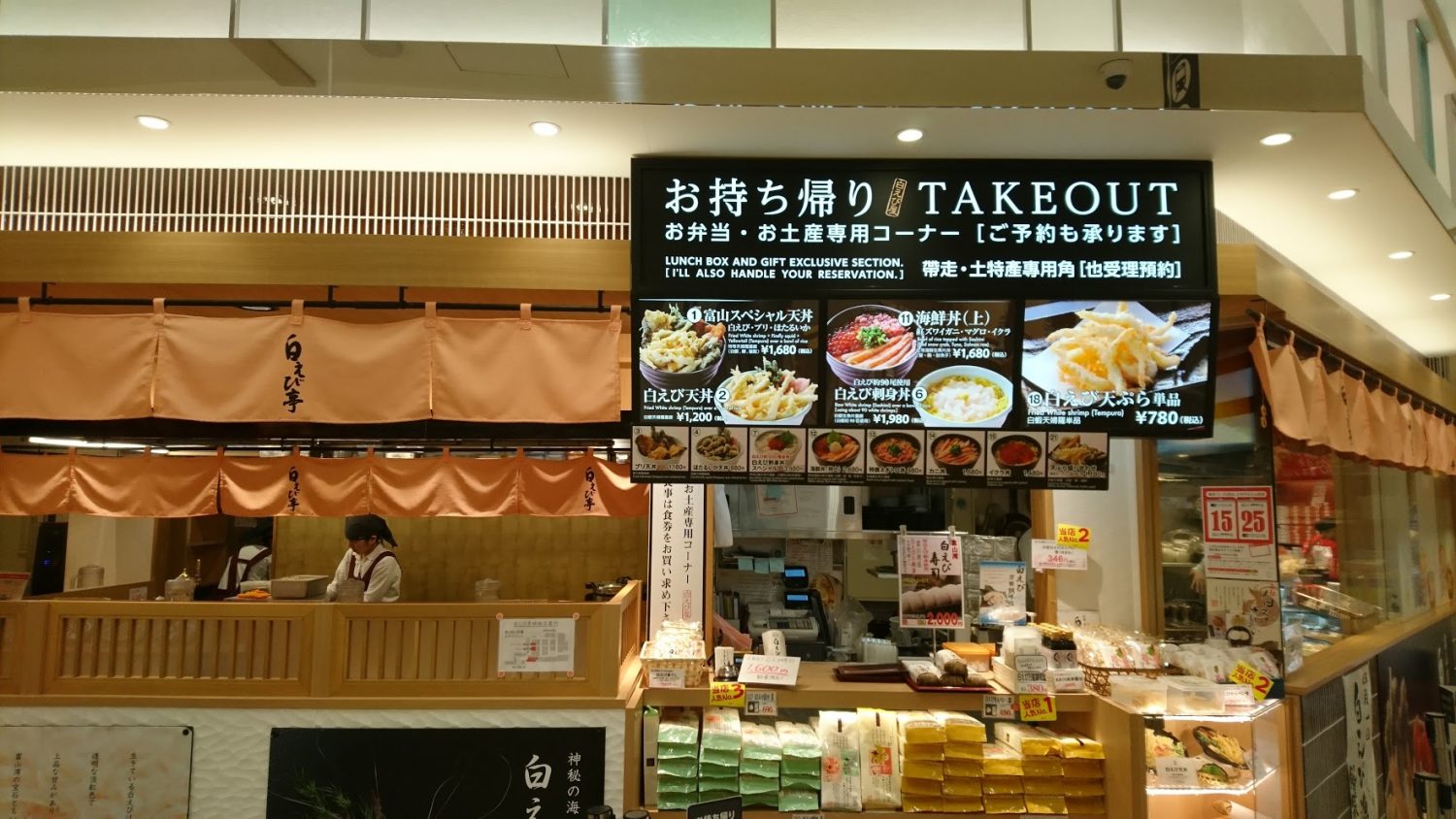
I ordered the Toyama special, a bowl that contained the signature seafoods of Toyama: White shrimp from Toyama bay, firefly squid and amberjack fish from the Sea of Japan. While I waited, which wasn’t long, several groups of Taiwanese tourists showed up. From their luggage and outfit they were likely from the same flight as me and had similar idea, glad I managed a few steps ahead of them.
The squid was fantastic but there were only two of them and I wished there was a bowl with only squids, the fish juicy and rich in the flavor of the sea, the shrimp had a fantastic aroma but prickly in the mouth.

There was also a shrimp cracker that went perfectly with tea, a tie in advertising trick that I gladly fell for as I later bought a box from the shop outside.
Full stomach accomplished, I circled the plaza, took a quick browse of the shops then boarded the shinkansen to Kanazawa.
Kanazawa is around 60km west of Toyama. By car or local train a 60min journey, the shinkansen takes just 23 minutes with a stop at Shin-Takaoka.
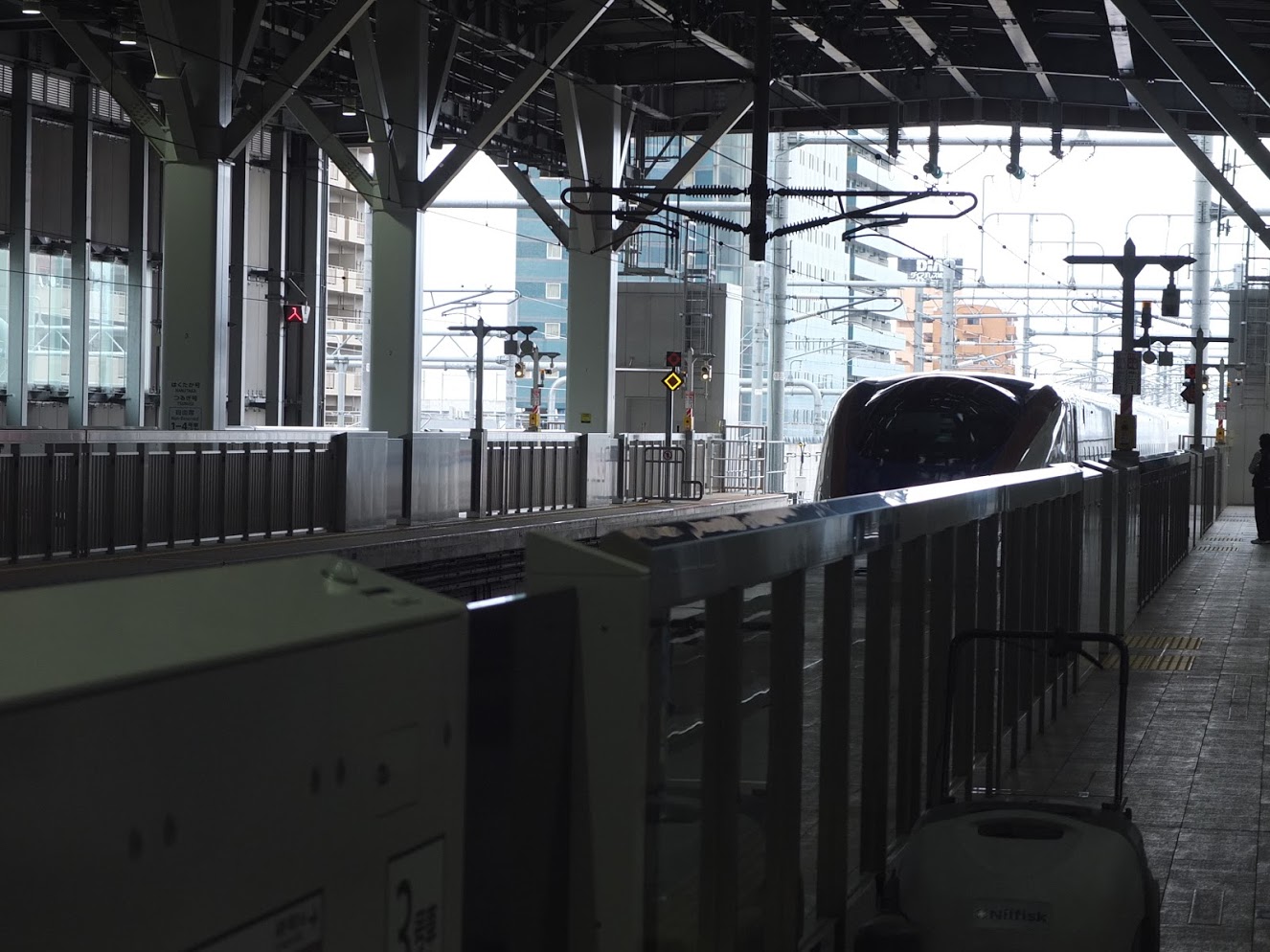
Toyama and Kanazawa were both cities with population of around 400k, their positions makes them a twin city on Japan’s northern coast. Usually the northern coast region encompassed Niigata and Fukui also, but Niigata being on a different shinkansen line, and Fukui not yet connected by shinkansen and also being smaller and further away, makes Toyama and Kanazawa closer geo-economically. Toyama was the manufacturing center and Kanazawa the commercial and cultural center.
Capitalizing the opening of the Hokuriku Shinkansen, Kanazawa especially went all in on its cultural heritage of arts, tradition and heritage, the hundred thousand koku fief, a branding campaign that raised its profile significantly above that of its long time rival Niigata, at least internationally. Hotels are sprouting up like bamboo shoots after the rain and land before the station is one of the few places in Japan where prices are going up in double digits.
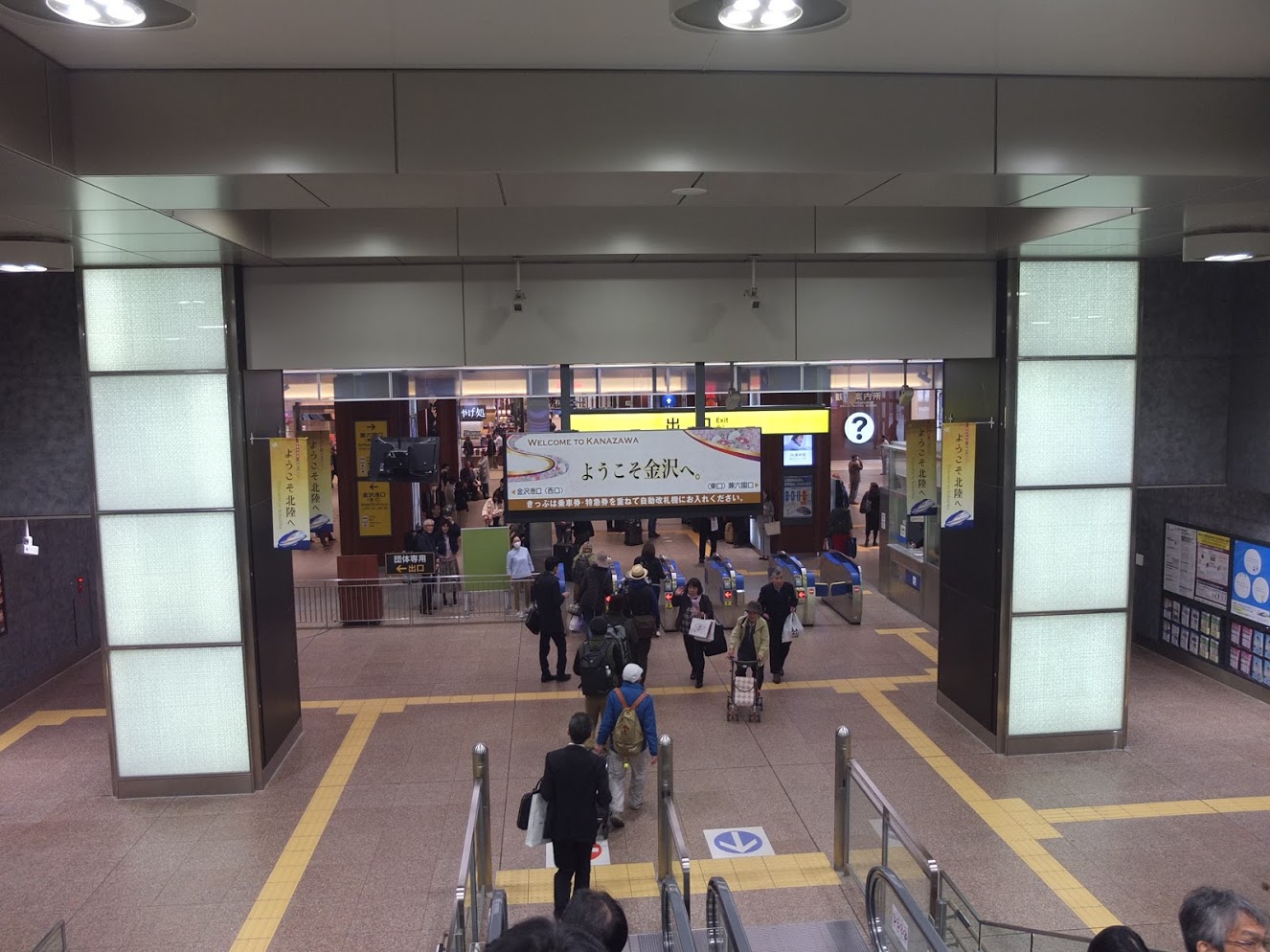
The scale of the city’s ambitions was keenly felt. The concourse immediately reminded me of Hakata, with its grand thoroughfare connecting east and west and corridors branching off either side to restaurants, souvenirs and department stores. And refined. While Hakata was like Tokyo where the station building was modern and clinical, the interior of Kanazawa station had its edge rounded out by the use of wood and lighting, and the place spared no expenses in artistic decorations that showed off local craft heritage. Kanazawa knew how it wanted to be seen and was confident in that identity.
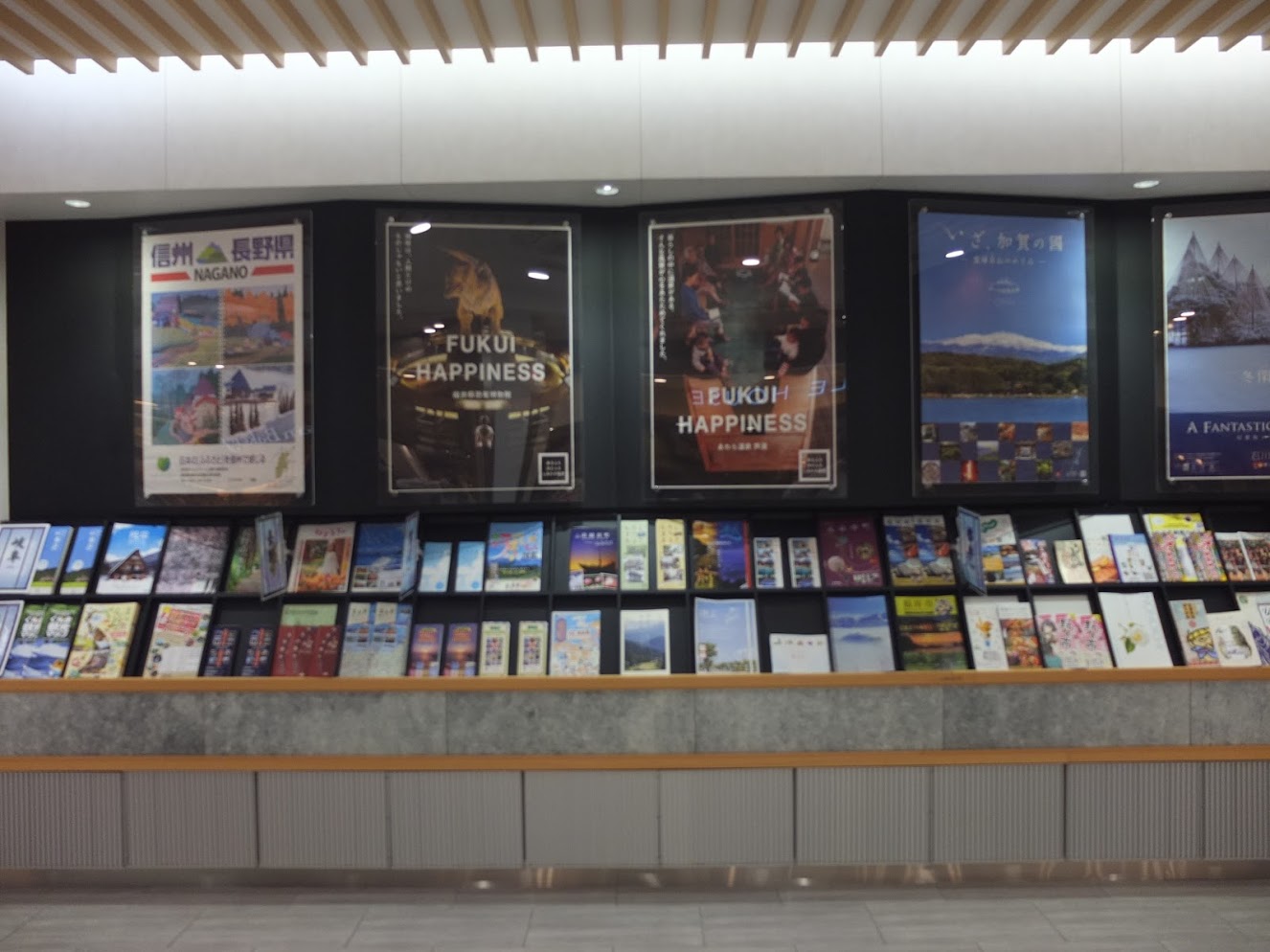
The tourism info center took prime spot at the gallery connecting the concourse and department store. Never have I seen a city/prefecture devote this much space toward promoting itself to visitors. In an open space about the size of 4 shop fronts, the first section is an info counter offering multilingual support providing services to introduce and recommend activities, booking accomodations and other help. The second and third area are stands of an incredibly comprehensive collection of flyers: walking maps, food maps, biking maps, activities, festivals. Everything including Kanazawa, Noto peninsula and Ishikawa prefecture as a whole. The fourth area showed local crafts with brief explanations and a small scale model of the famous Drum Gate that stood before the station, that has become a symbol of Kanazawa.
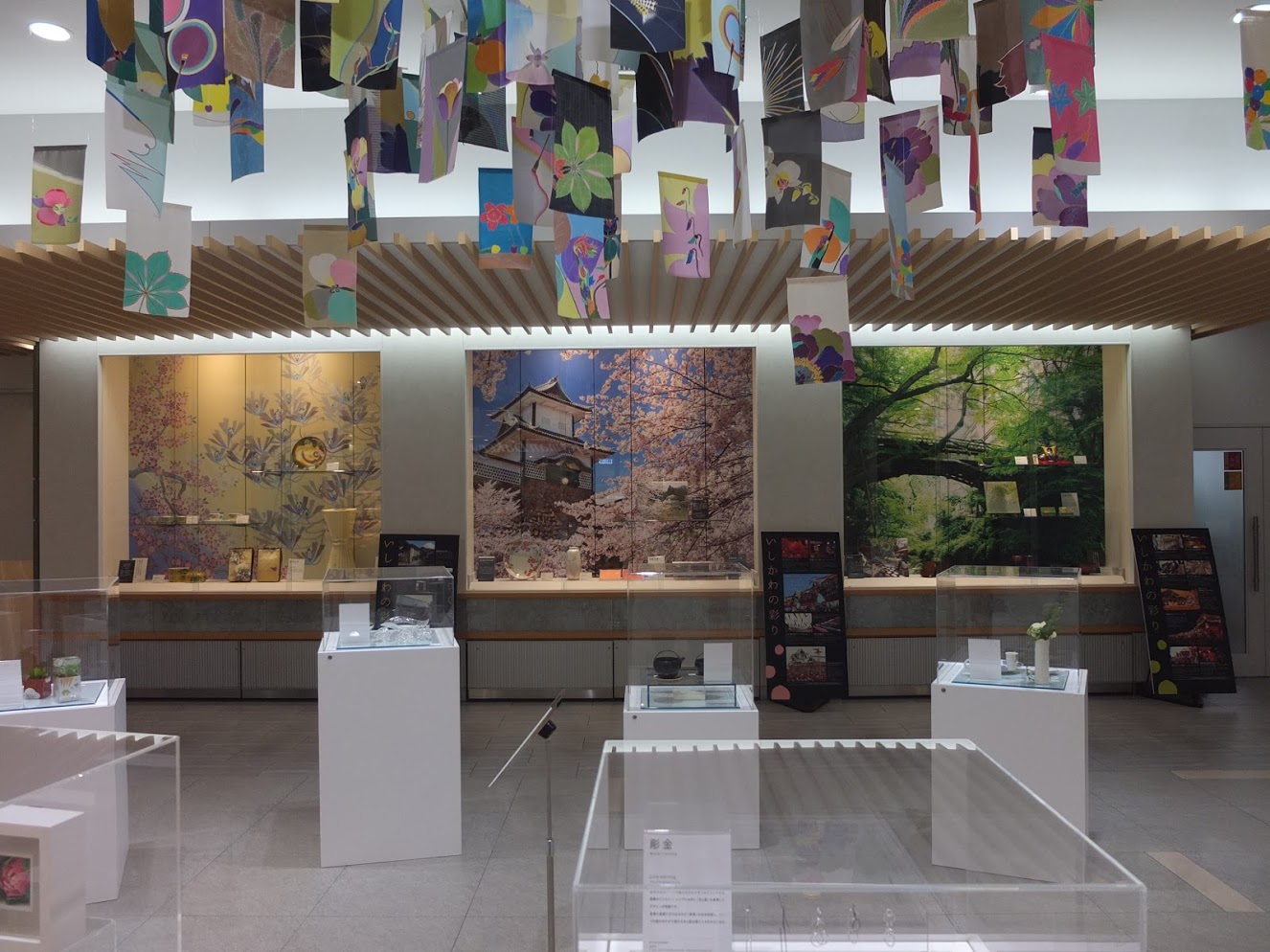
I grabbed a few guide maps. One that would prove most useful was the bike-sharing map. Kanazawa have a Machi-Nori system where bikes are available for rent from docking stations around the city. For just 200Y a day, one could ride as many times as one wants for free so long as the bike is returned to a dock within 30 minutes. The map laid out where all the docking stations were and the suggested roads to ride on to avoid traffic.
Out the eastern entrance and passed under the Drum Gate. My stay was about two blocks away, less than 5 minutes walk. On the way I checked out the nearest Machi-Nori station and how they worked. The dock station was very close to the hotel, only one alley closer to the train station, more convenient than google map suggested.

Continuing on to Hotel Nakada, a small family run business hotel that was old and cozy. Nicely timed to 10min to 3pm, I was certain they wouldn’t mind letting me check in a touch early. The first floor immediately to the left is a hall that in bygone days saw meals served, now it sits mostly unused. A long narrow corridor leads pass the tiny alcove that served as the reception and at the end of it the elevator. Squeezed against the wall was a water cooler and a coffee machine.

One complimentary coffee, the lady told me, handing me an old fashioned key chained to a rectangular rod engraved with the room number.
The room was decently sized, a little larger than the business hotel chains in Tokyo. The furnishings were old, but clean and well cared for.
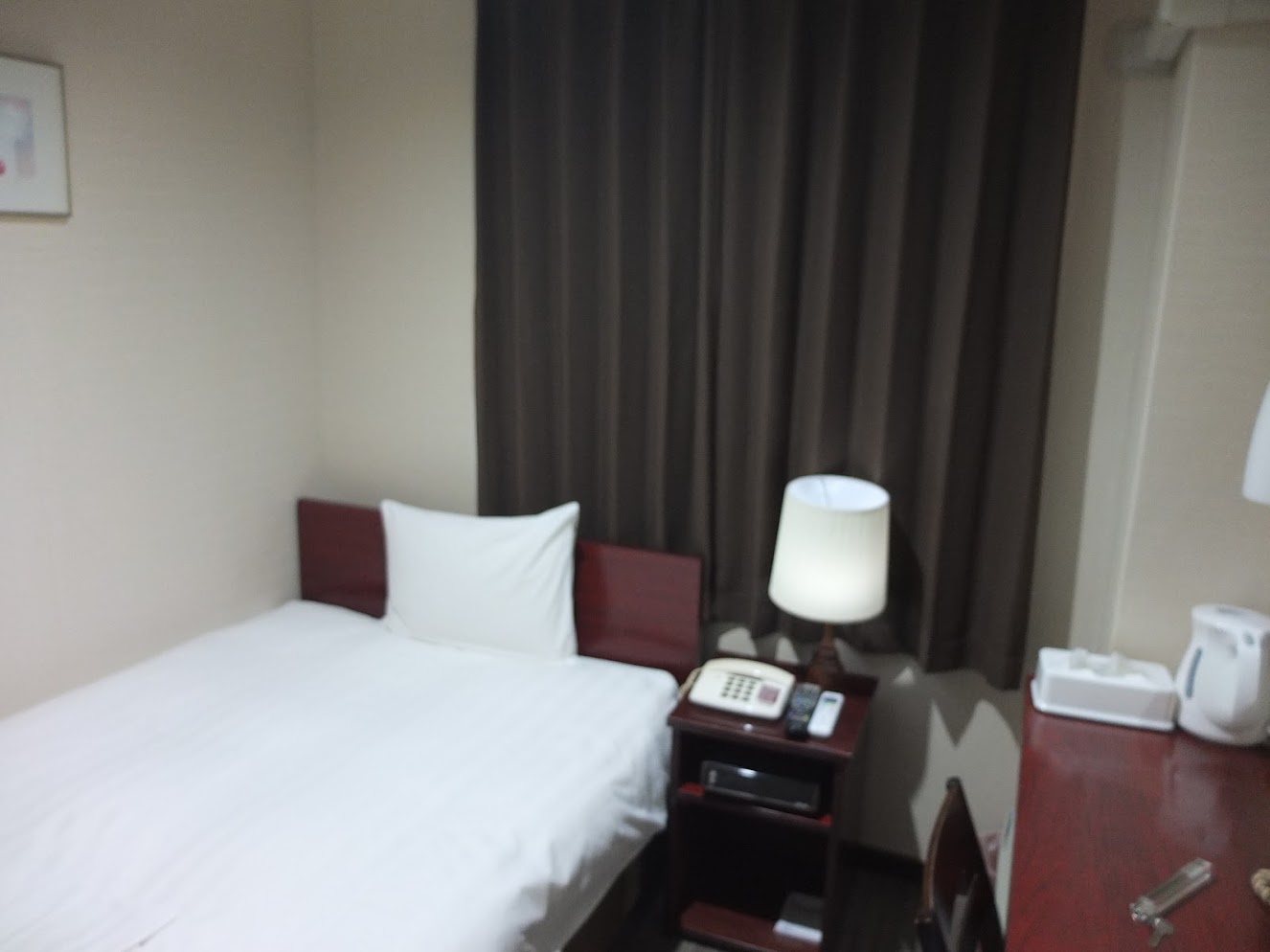
I had wanted to drop the bags and head back out immediately, but a weariness took over me, and with a long breath I took up the offer for free coffee.
The coffee was typical Japanese UCC coffee, deeply aromatic and went smoothly with cream. I made use of the break to pour over bike map. The main bike path led south from the docking station, then go east at the first major road puts me at Musashi ga Tsuji, then bike down for a short distance then east again puts me at the north end of the castle park, from there it’s an easy cruise along the walls till Kenrokuen where the cherry blossoms are.
I collected my thoughts and headed out.
The Machi-Nori station had instructions in the major foreign languages and registration was straightforward. I registered using my credit card then swiped a bike console with my SUICA. The money was deducted from the credit card, the SUICA only served as an identification mechanism. The dock beeped and being unaccustomed, I had to wrangle the bike out the railing.
The sturdy bike was basic and functional. At the front hung the stereotypical bicycle basket and in it was a plaque card giving instructions on how to return the bike. On the handle bar was the gear change switches and a bell to warn pedestrians.
I trundled down the road through residential suburb. Along the way I stopped at a strange lone slice of earthen wall boxed in on all sides by the roads, preserved as an archaeological site of the old castle town’s outer moat.
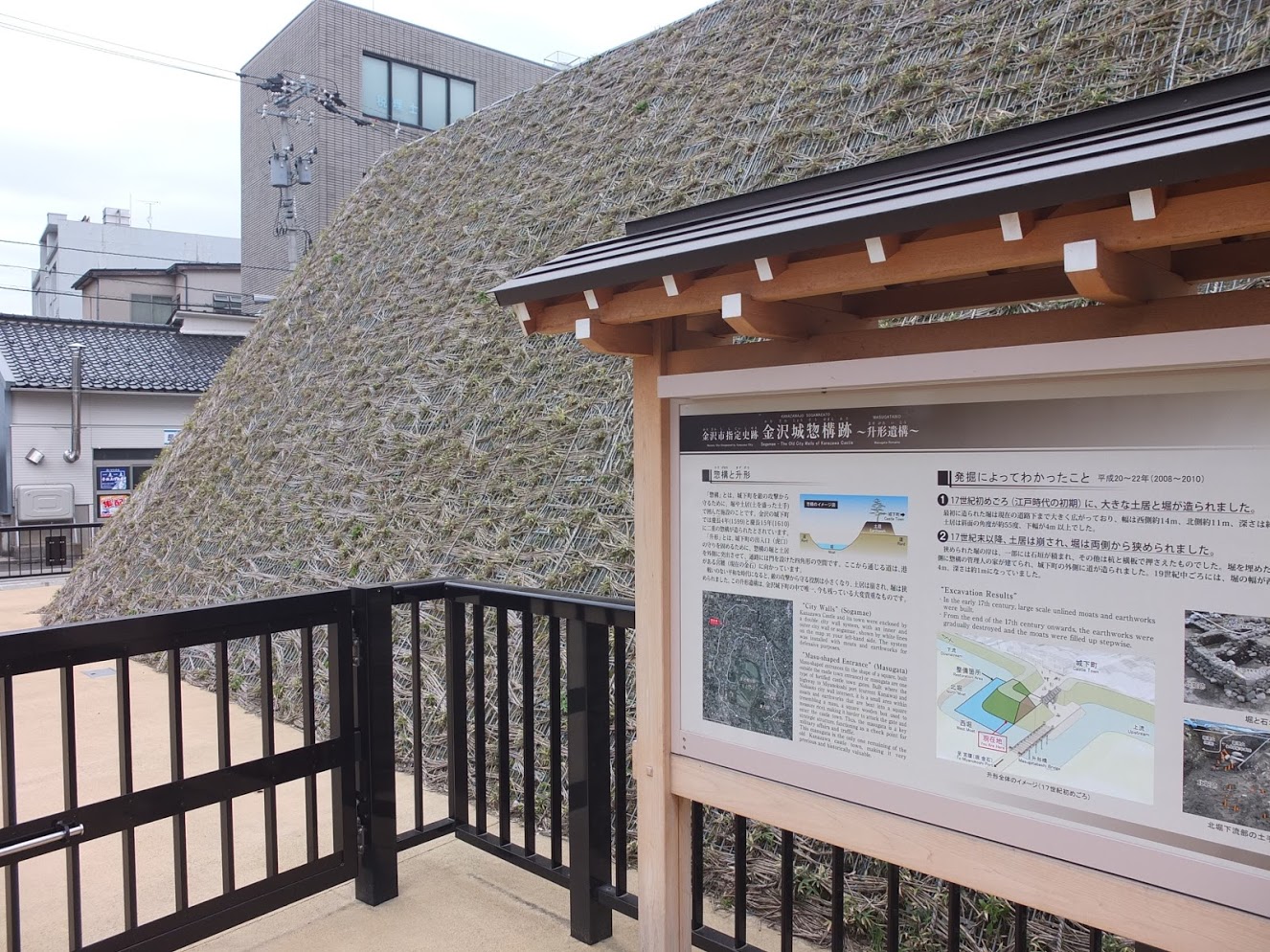
Musashi ga Tsuji one of three major shopping district of the city, the other being the station area and Korinbo-Katamachi. Musashi ga Tsuji was anchored about Omicho market, a large fresh produce and seafood market place. I did not pause here and biked through the busy intersection.
Between Musashi ga Tsuji and Korinbo laid the concentration of office buildings. The wide road and sidewalks were filled with traffic. I only followed for a short block, turned left up a side street till I reached a small shrine situated at the north western corner of the castle ground.
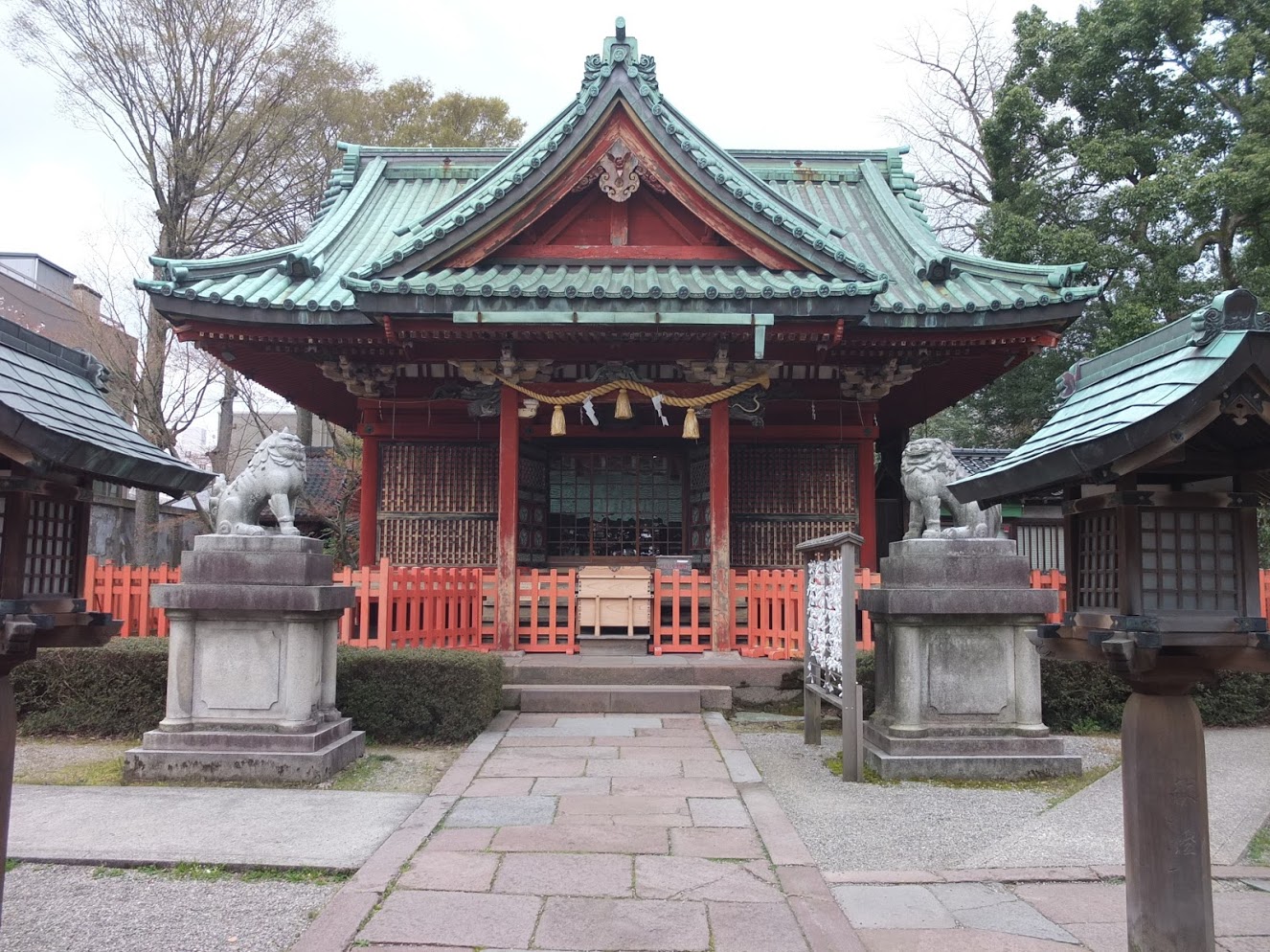
The clouds have gathered and the weather turned a little chilly. I followed the road south, the roadwork made me disoriented and I soon lost bearing and could not find the docking station for the Oyama shrine. This was one problem with Machi-Nori, a lot of times the docks were tucked behind buildings or at the back of carparks and the maps weren’t detailed enough to help locate them. As a result, I continued on and would forget to come back to visit Oyama shrine.
The narrow road walled in by the tall castle wall opened up, the wall retreated to give way to wide expanse of moat and parkland. Tourists zipped this way and that on Machi-Nori bikes. This was the focal of Kanazawa, to the north where I came was the castle, Kenrokuen to the east, 21st Century Museum, Suzuki Museum and many other arts and cultural space to the south, and Korinbo in the west, all within a few hundred meters.
I parked the bike at the 21st Century Museum dock and crossed the road to the entrance of Kenrokuen. I was about to head in when I became captivated by the sight.
Kenrokuen and the castle were situated on two adjacent hills separated by a road in the valley. On both banks were tall cherry blossom trees like a rolling ocean of pink and white. I stood there, finally understanding why cherry blossoms were so cherished. I have seen cherry blossoms before, a few, even dozens of them, they were beautiful but never moving.
This was the first time beholding a hundred cherry blossom trees all in full bloom, a magical world thought beyond nature’s imaginations, something of a cliche invented by paintings and animes. Even underneath a white moody sky they beckoned with the warmth and wellwishes of spring.
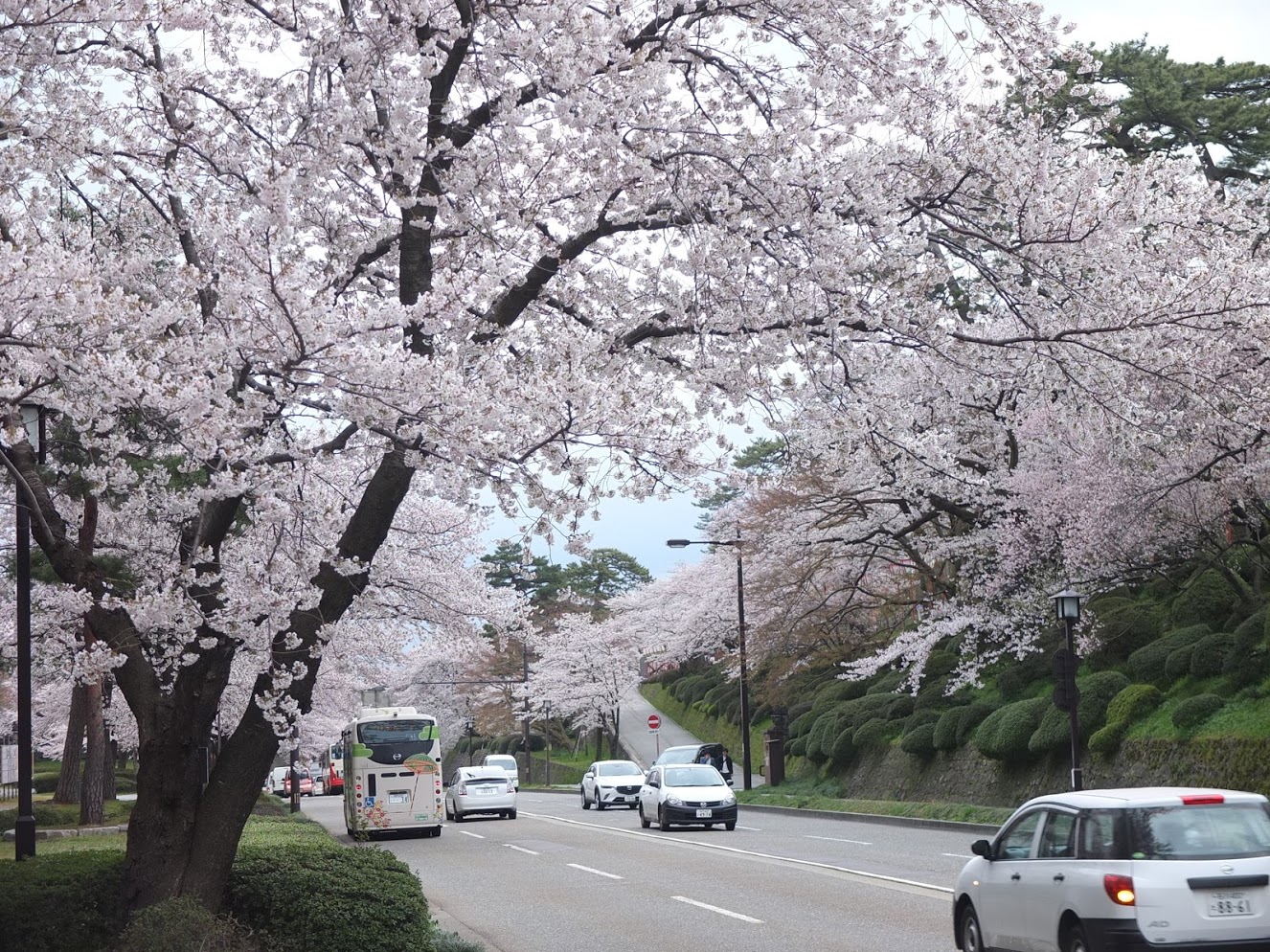
I walked down the valley, endlessly looking all about me, till I reached the far end and joined the crowd in climbing up the narrow street toward the bridge connecting the garden and the castle.


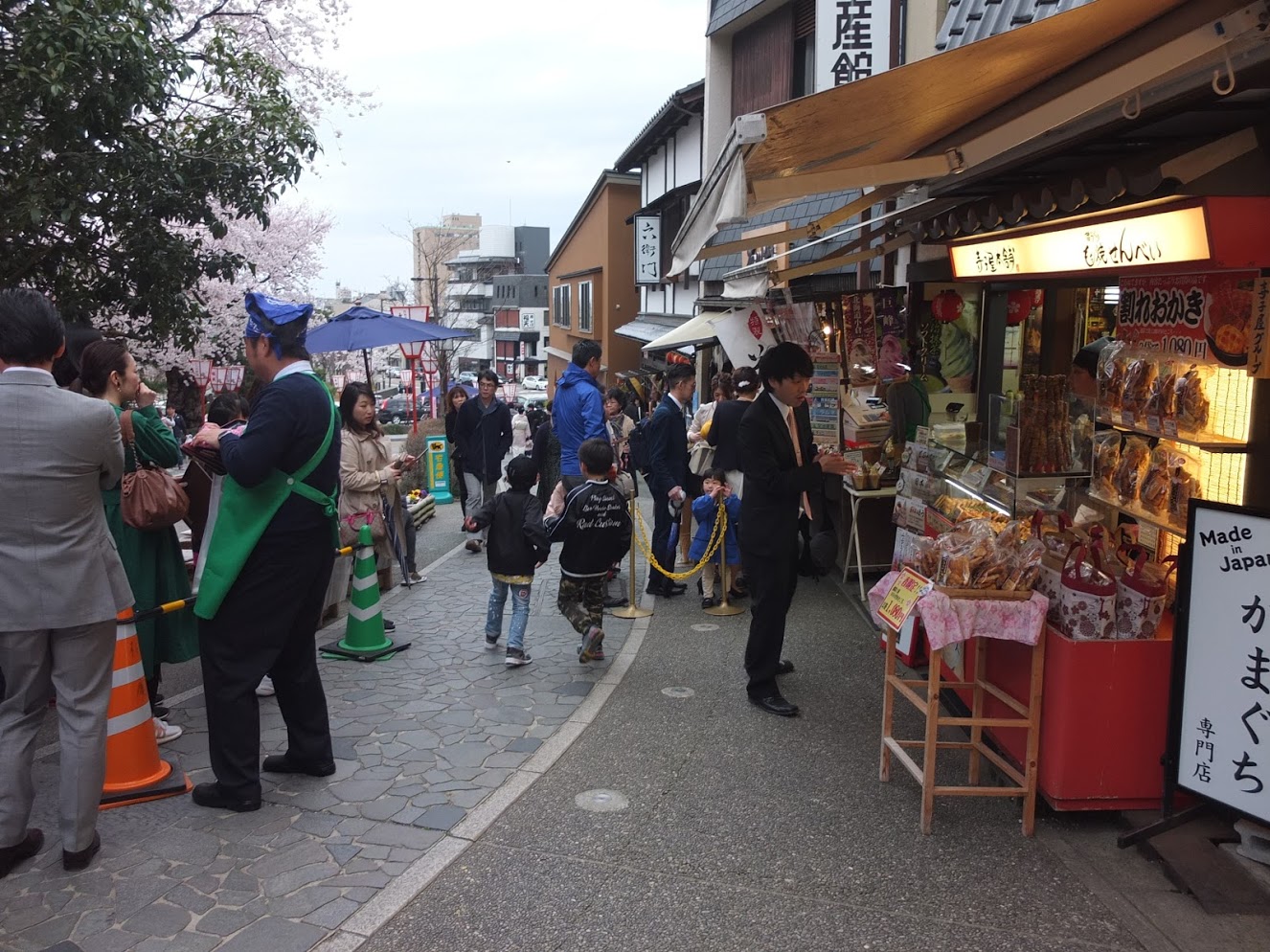
Cherry blossom festival. Before the main gate to the garden was a line of teahouses, and now in the empty space were food stalls selling all kinds of festival food. The required yakisoba, others mouth watering scents of grilled squid, skewers, hotdogs, small custard cakes. Festival, this was a festival! I screamed internally.

Rational thinking left me, I wandered back and forth along the strip, basking in the crowd and atmosphere, studying the cherry blossoms, seeing the joy on people’s faces. I drifted with the crowd into Kenrokuen, free entry during the cherry blossom season.
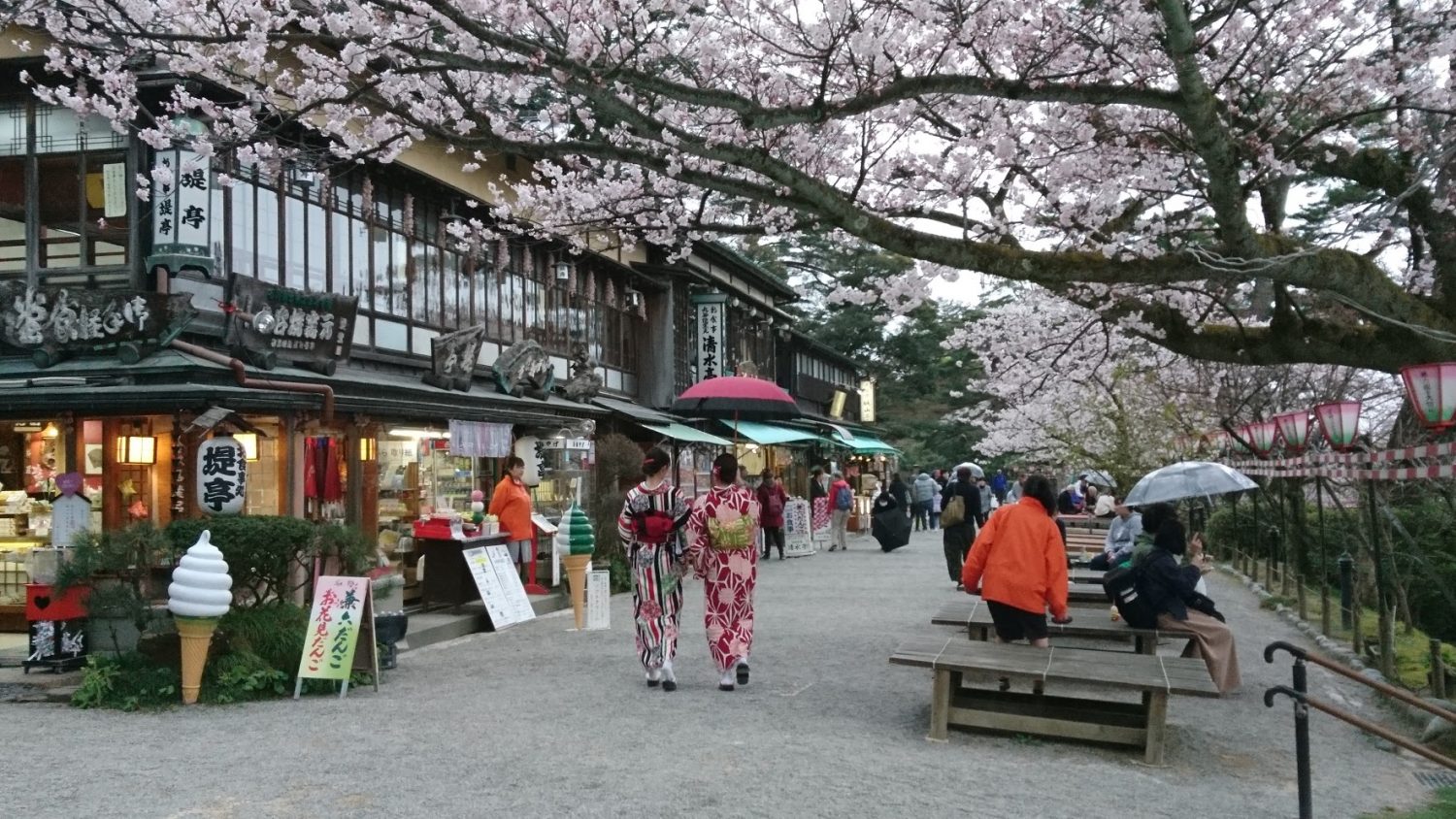
Kenrokuen is known as one of the three great gardens of Japan, created by ruling daimyos as a place of relaxation and to entertain guests. Different from Korakuen of Okayama and Kairakuen of Mito, Kenrokuen’s location on the northern reaches of Japan means it gets plenty of snow in winter, many of its best known scenes are one of tranquil black and white, and the tent like structure erected to protect the pines from being crushed under the weight of snow.
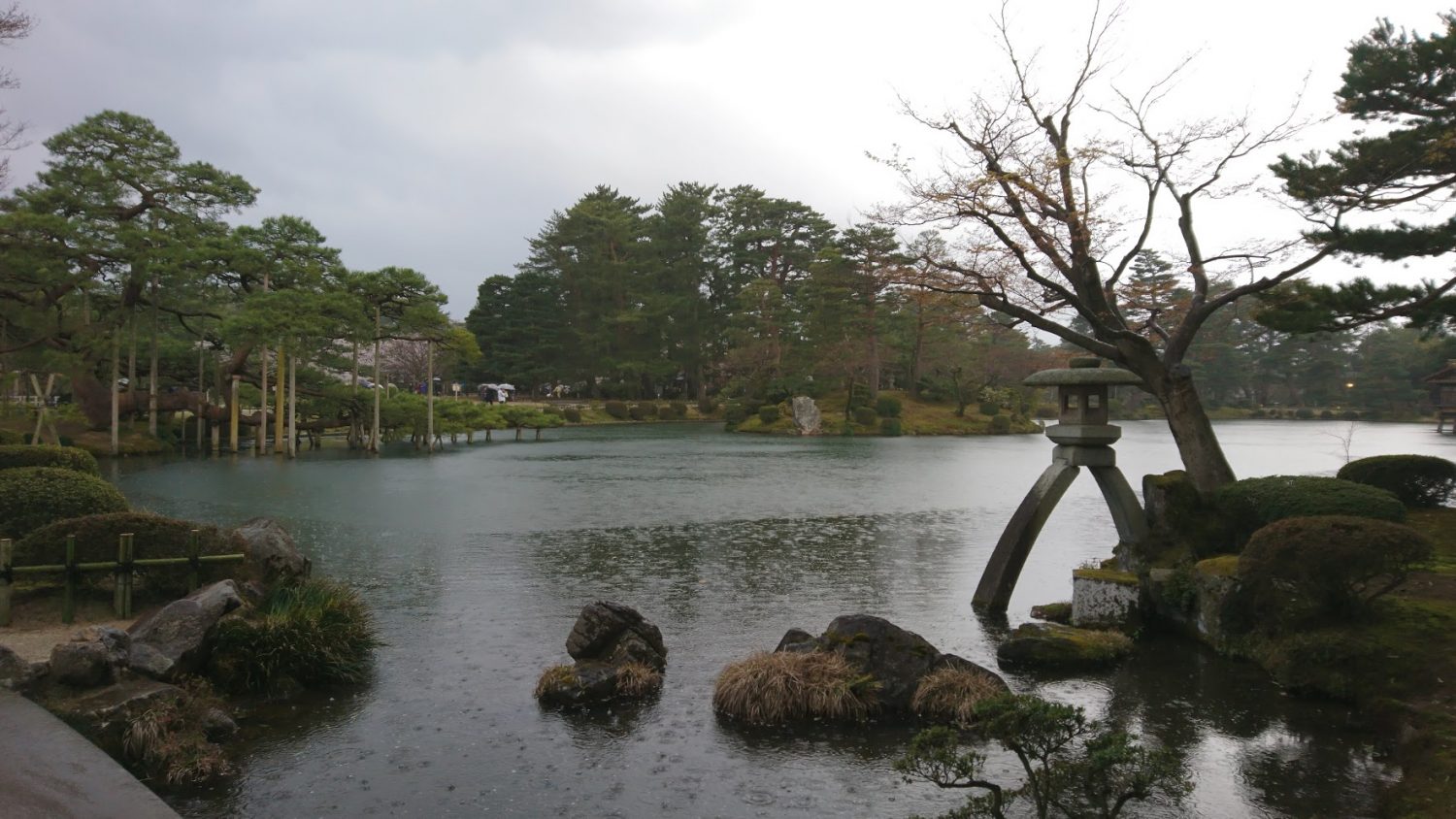
A gust of wind picked up and the skies darkened in a sudden downpour. Everywhere people opened umbrellas and headed downhill out of the garden for shelter. I walked down slowly, taking a few photos here and there as I went.
It’s a shame, the weather.
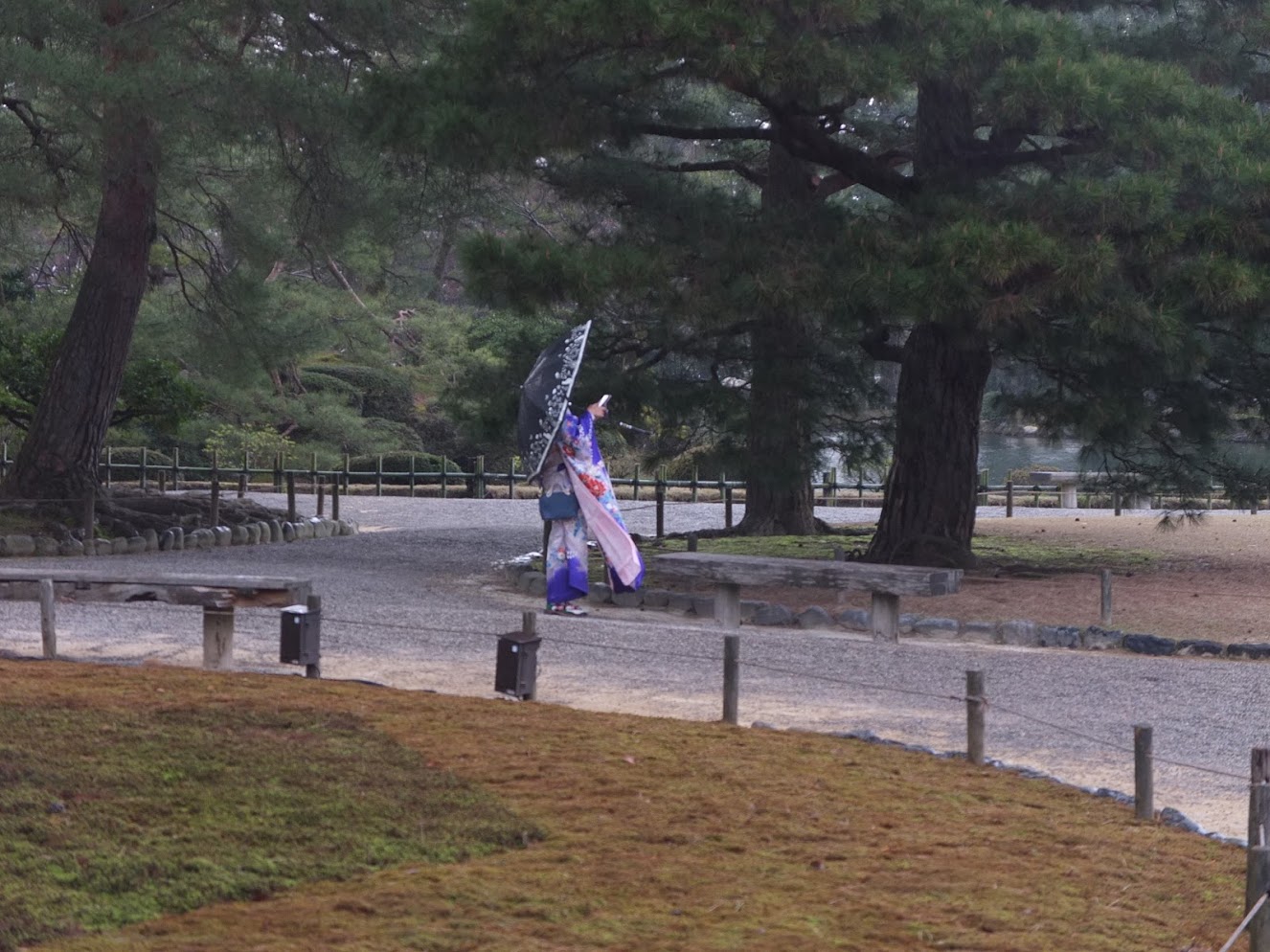
I reached the bottom of the path, when as if hearing the complaints, rays of golden sunlight fell into my eyes. Could it be?
The rain had stopped as sudden as it had come. The last rays of the afternoon sun shone gloriously like the namesake of this city.

I rushed up the hill back to the teahouse strip. People were filling back into the strip, coming out of the teahouses and from underneath awnings. A few shop attendants busied wiping down benches.
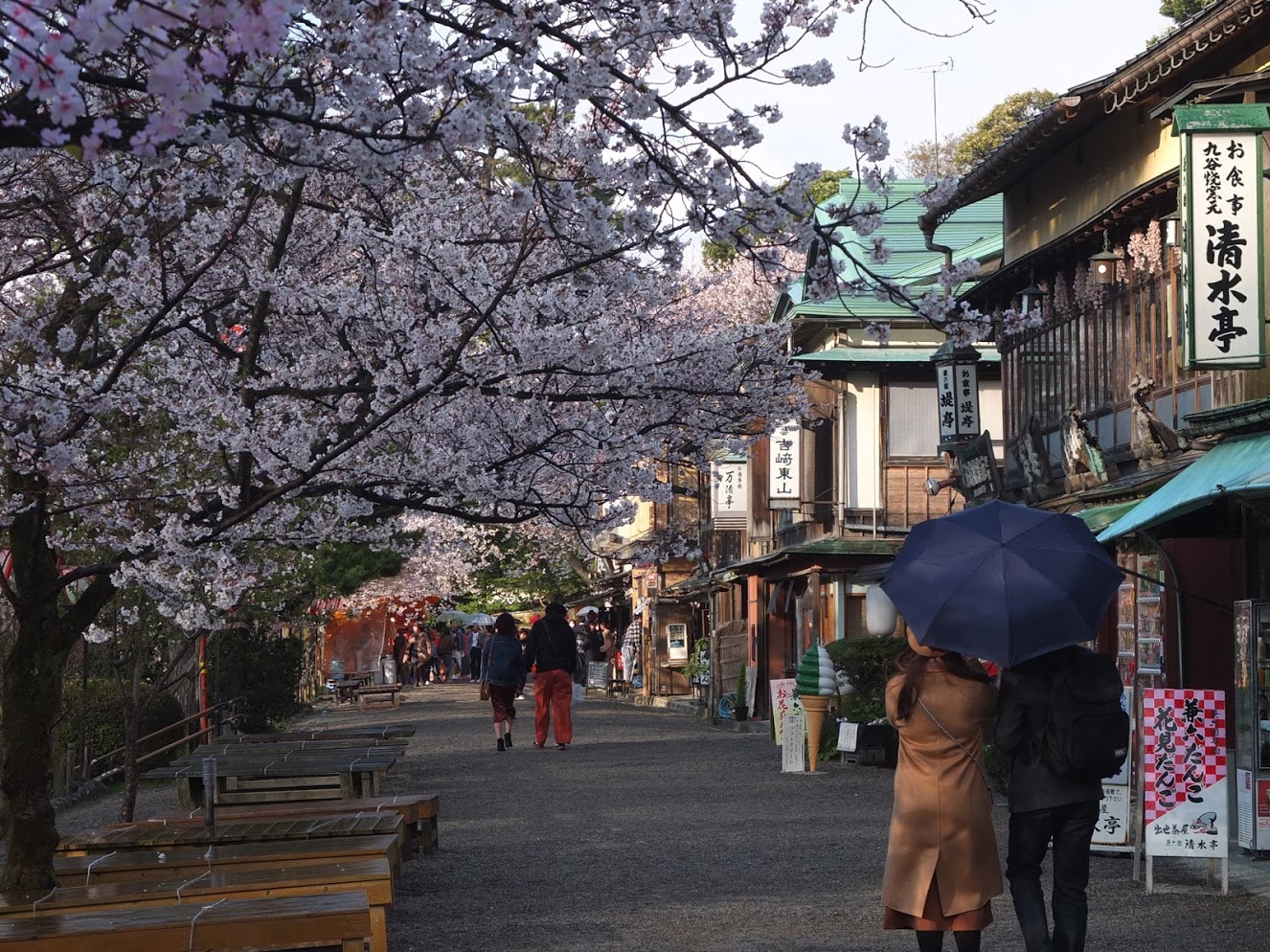
The sunlight filtering through the blossoms brought out the vibrant pink of the flowers, a translucent pale white that glimmered in the light.
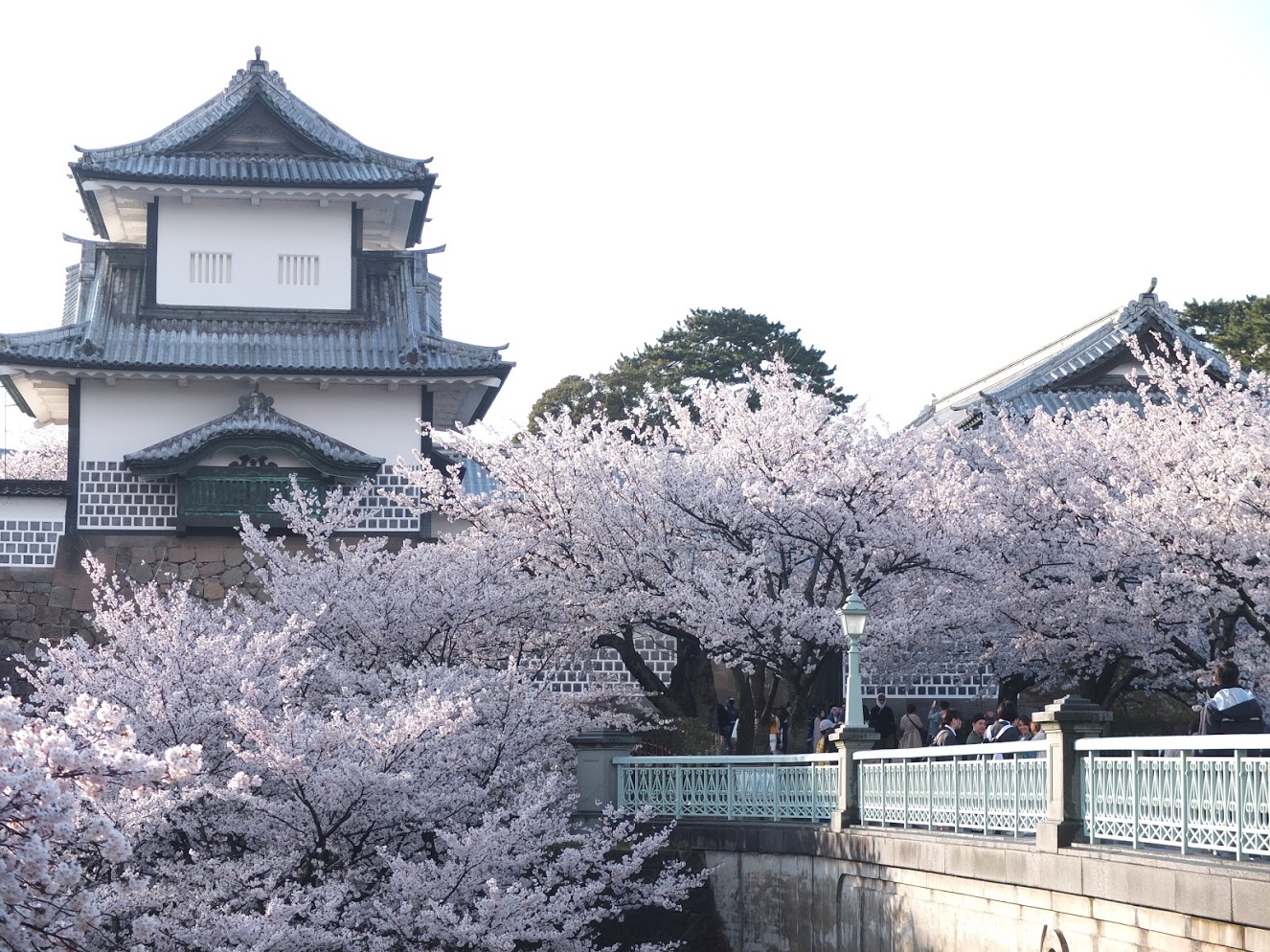
I wandered across the bridge into the castle grounds and out the north side. Then I made up my mind that I had to come back for the night viewing. Although tired and wanting an early start tomorrow, I could not let this chance slip past. The sky was clear, it’s better to stay late tonight than leave till tomorrow night.
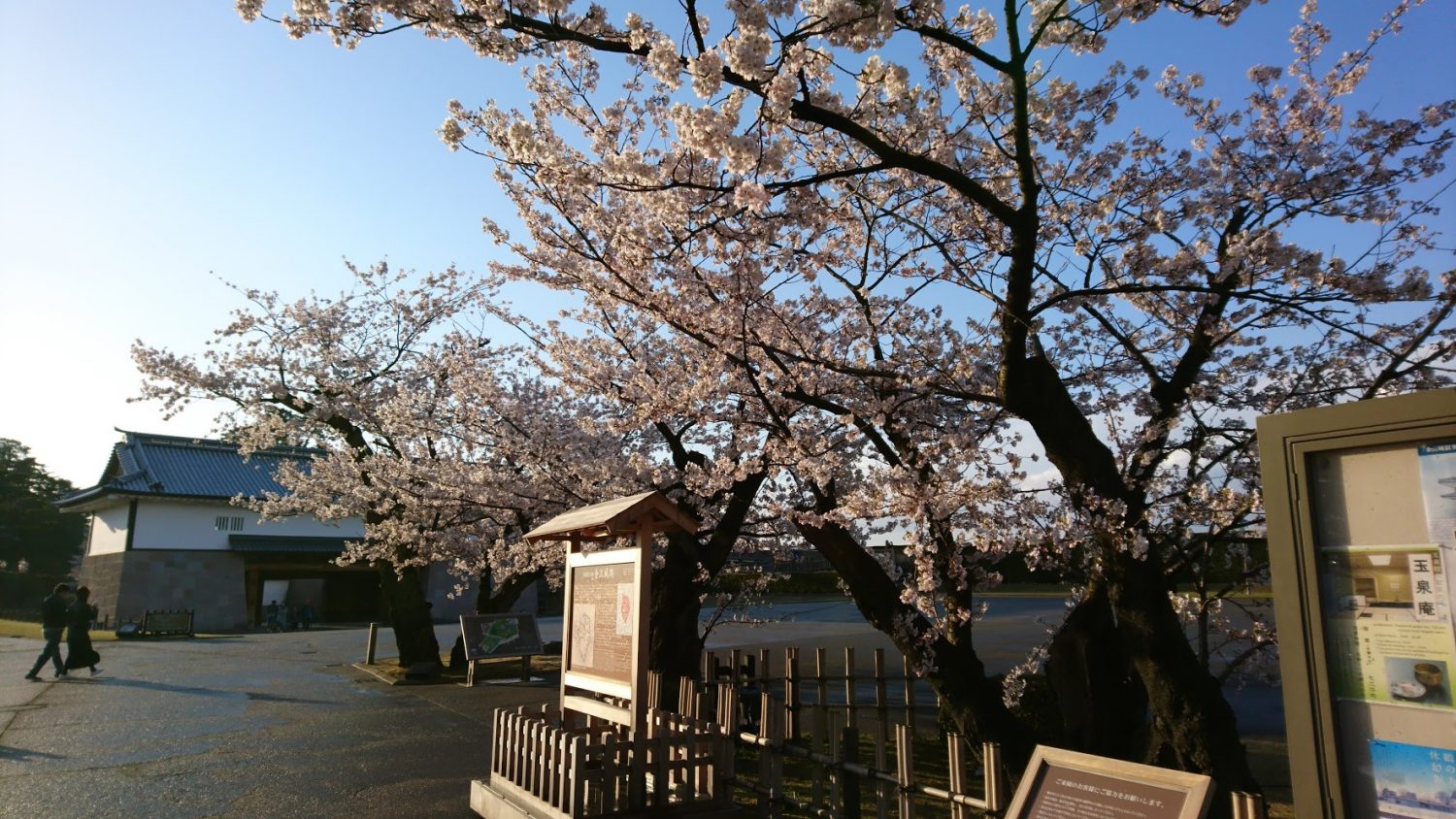
I flipped through the notes. Dinner was meant to be a sushi train back at the station. In the Korinbo area I had marked a few places as potential alternatives for tomorrow. The one that looked most interesting, Turban Curry, closes at 7. It was close to 6, should be okay if I moved quickly.
I biked back to 21 Century Museum and followed the road toward Korinbo. Turban Curry was just on the left hand side a short distance from the main thoroughfare, a dinky retro looking eatery.
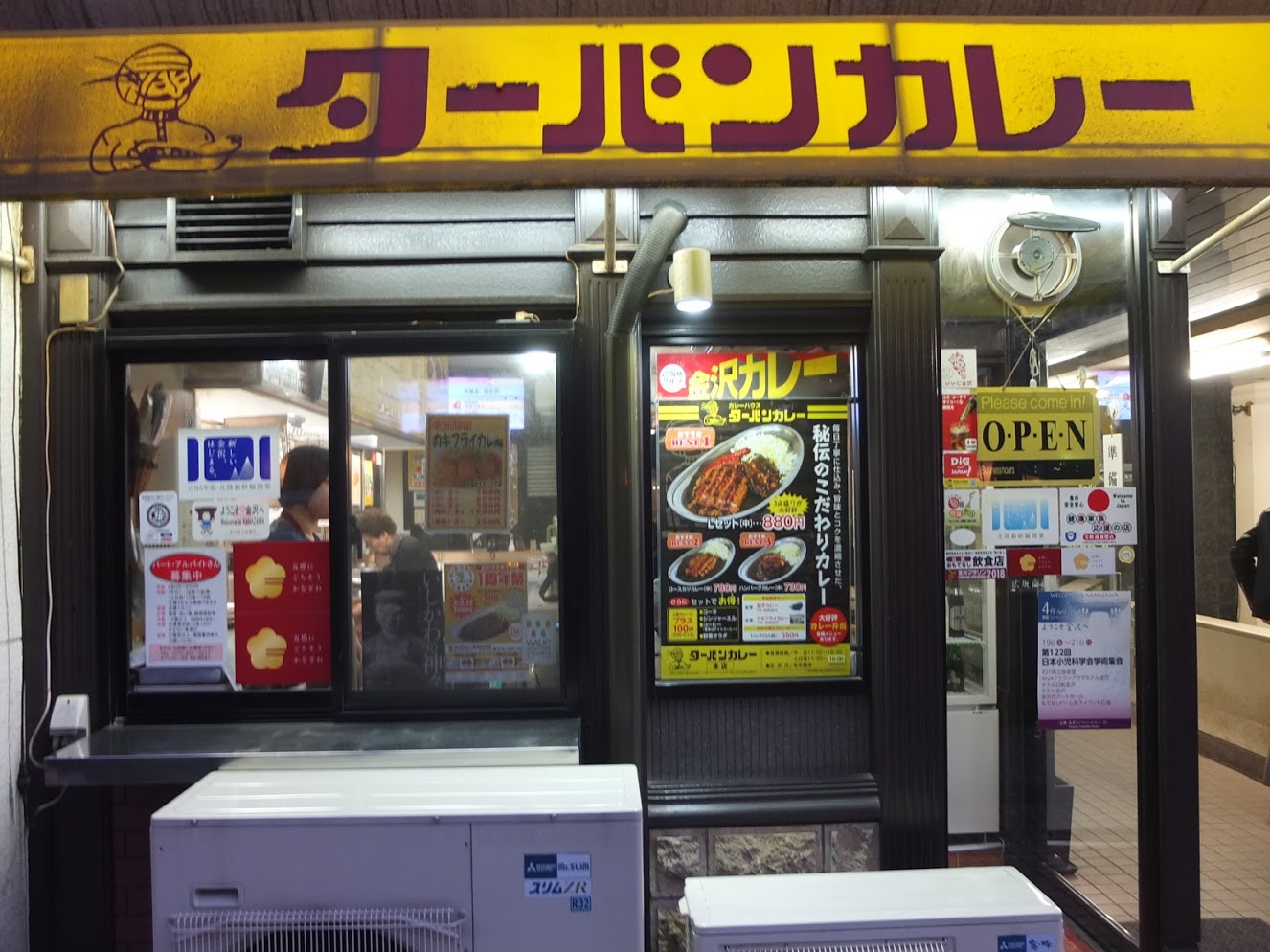
The place was not big, there’s a few tables along the windows and a long counter typical to Japanese eatery. On one corner of the ceiling was a TV tuned to the local news and menu board hung above the cooking area could only be described as effective.
I sat down toward the center, facing directly the giant pot of curry cooking on the stove. The middle aged woman came over with a glass of iced water and I pondered over the menu. I had my sights set on the L-Set. Why it was called the L-Set I could not tell, other than it did not refer to portions, as the L-Set was further broken down into medium and large in brackets. From the picture and description it had everything, the sausage, hamburger and pork cutlets. Which explained the Set, but still no hint to the L.
Not all mysteries required answers.
For less than 1000Y, it was better than fantastic. I wolfed down the curry, wondering if I should have seconds.
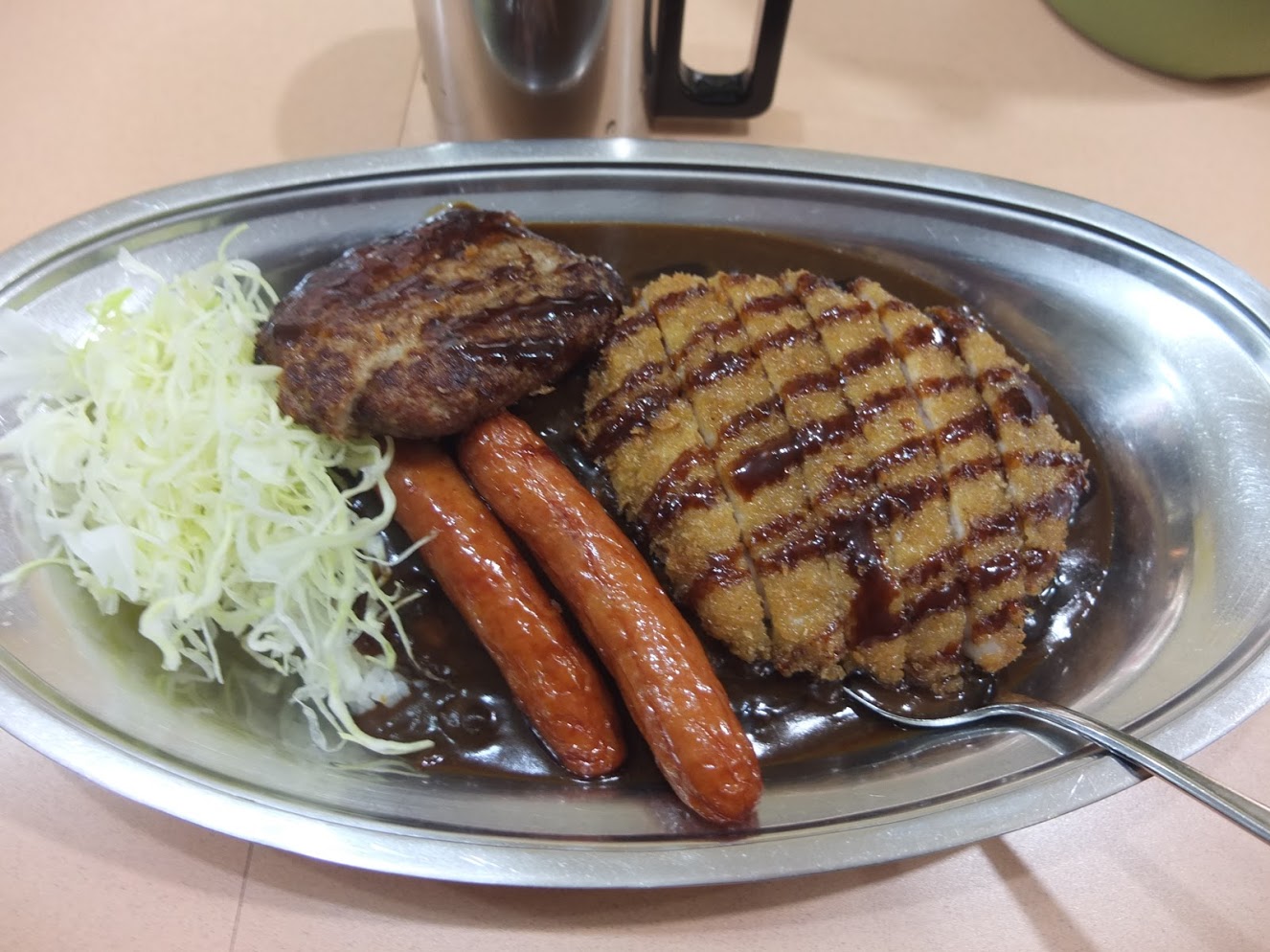
Kanazawa curry is a local specialty very different from the regular Japanese curry. It was dark and thick, bold and unrefined both in presentation and taste. It looks and tastes like something out of the lean postwar periods, cheap, simple and effective, a stamina booster after a long hard day. Perfect in getting ready for the night’s activities.
The teahouse strip was just as if not more busy than before. Brightly lit, bobbing dark shapes hustled beneath the snow like blossoms. The air smelled of grilled squid, a most devious street food that tugged one into struggled lips licking looks. People clamored about chattily, sharing in food and joy.
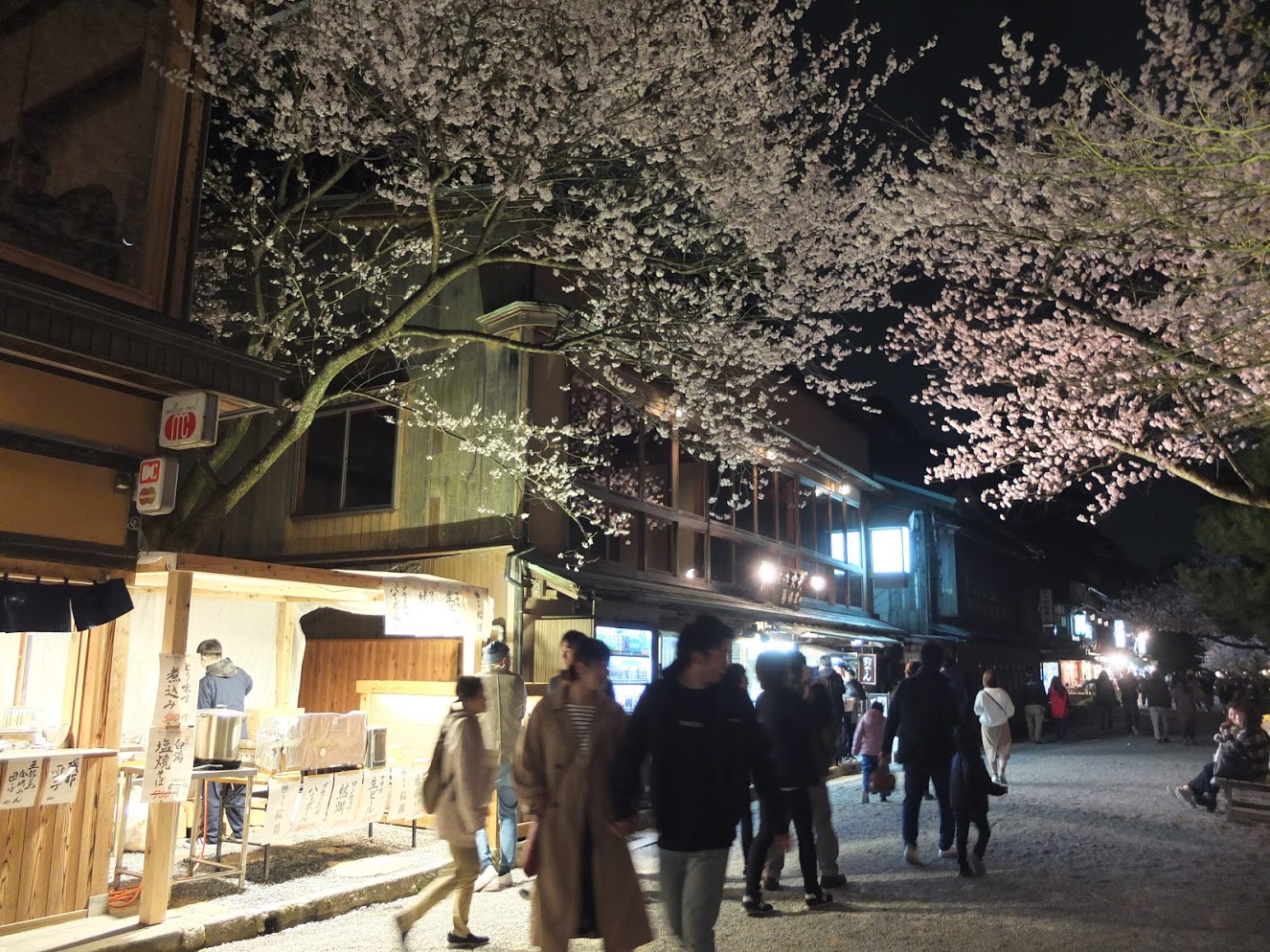
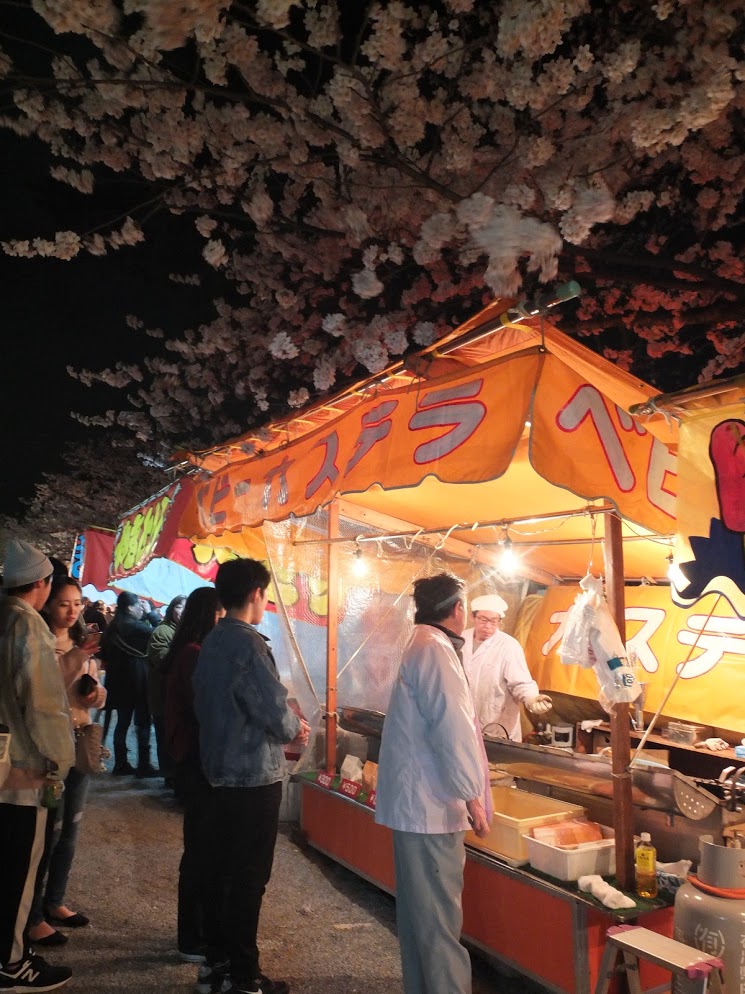
The pink cherry blossoms were white, and blue and gold, soaking up the nearest lightsource. Ascending the slope up to the pond in Kenrokuen, through the forest of ghostly cherry blossoms into a fantastical realm.

The rivers glowed with the reflections of the fiery petals above. The wind was chilly yet no one seemed to mind. Joyful, peaceful. The words from the Cambridge History of Japan came to me. They endure the cold of winter and weather the heat of summer for the colors of spring and autumn. The words were referring to Kyoto, but it must equally applied here. After a long snowed in winter, how it must be to welcome the arrival of spring with pomp and fair.
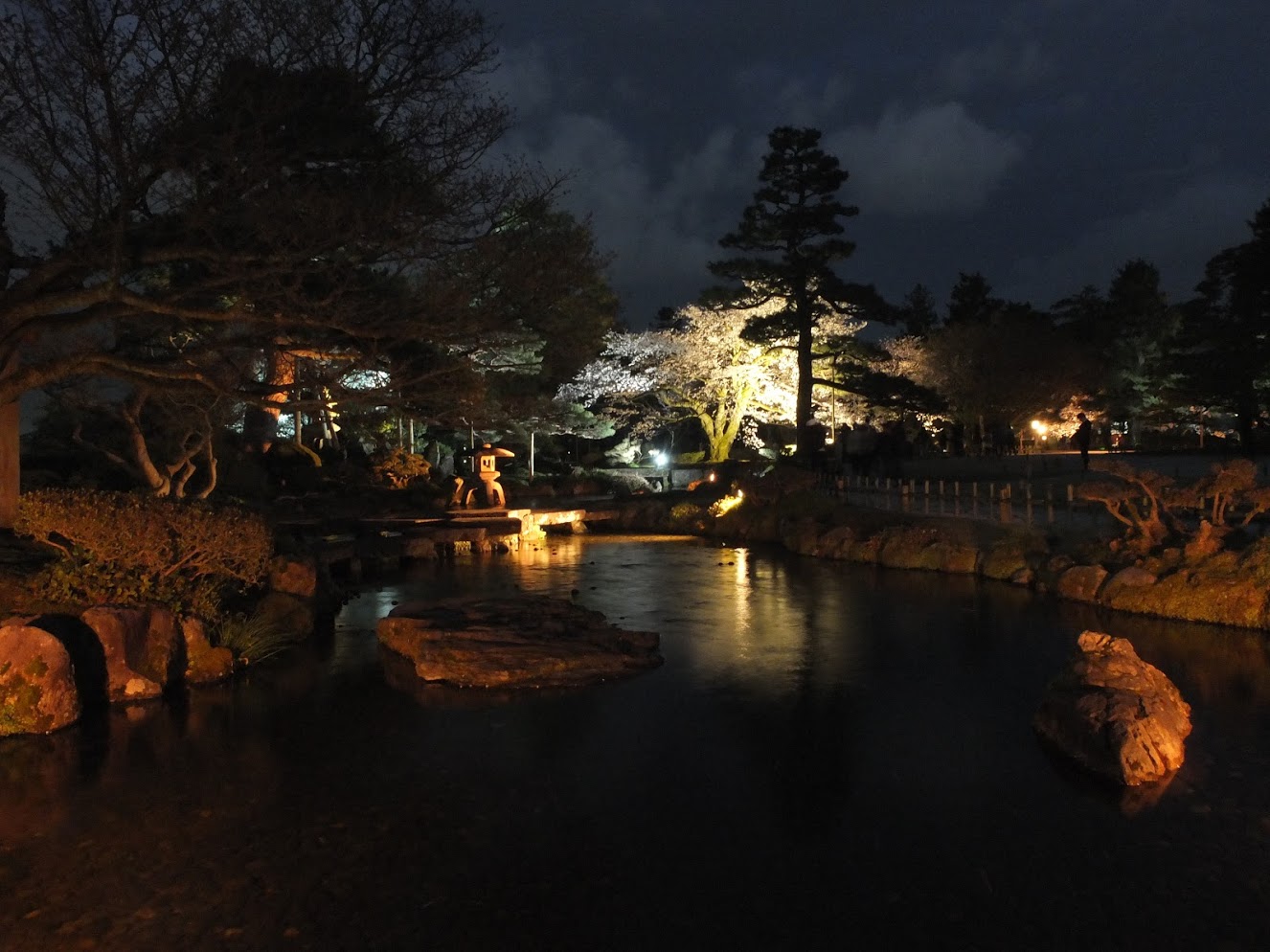
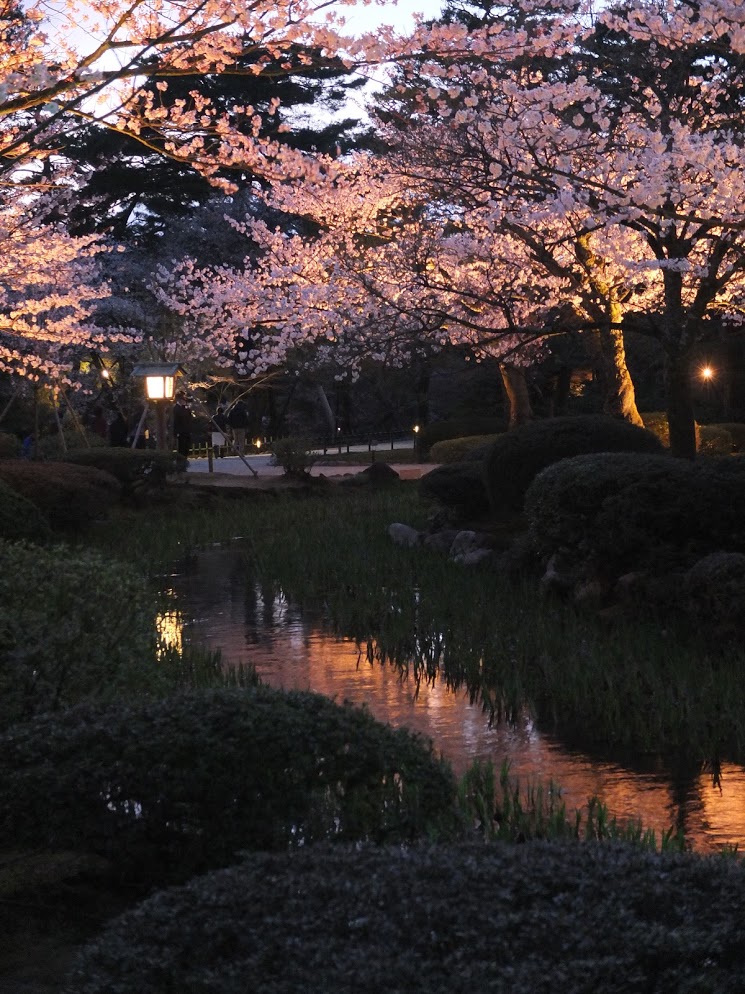

From the garden I moved to the castle.
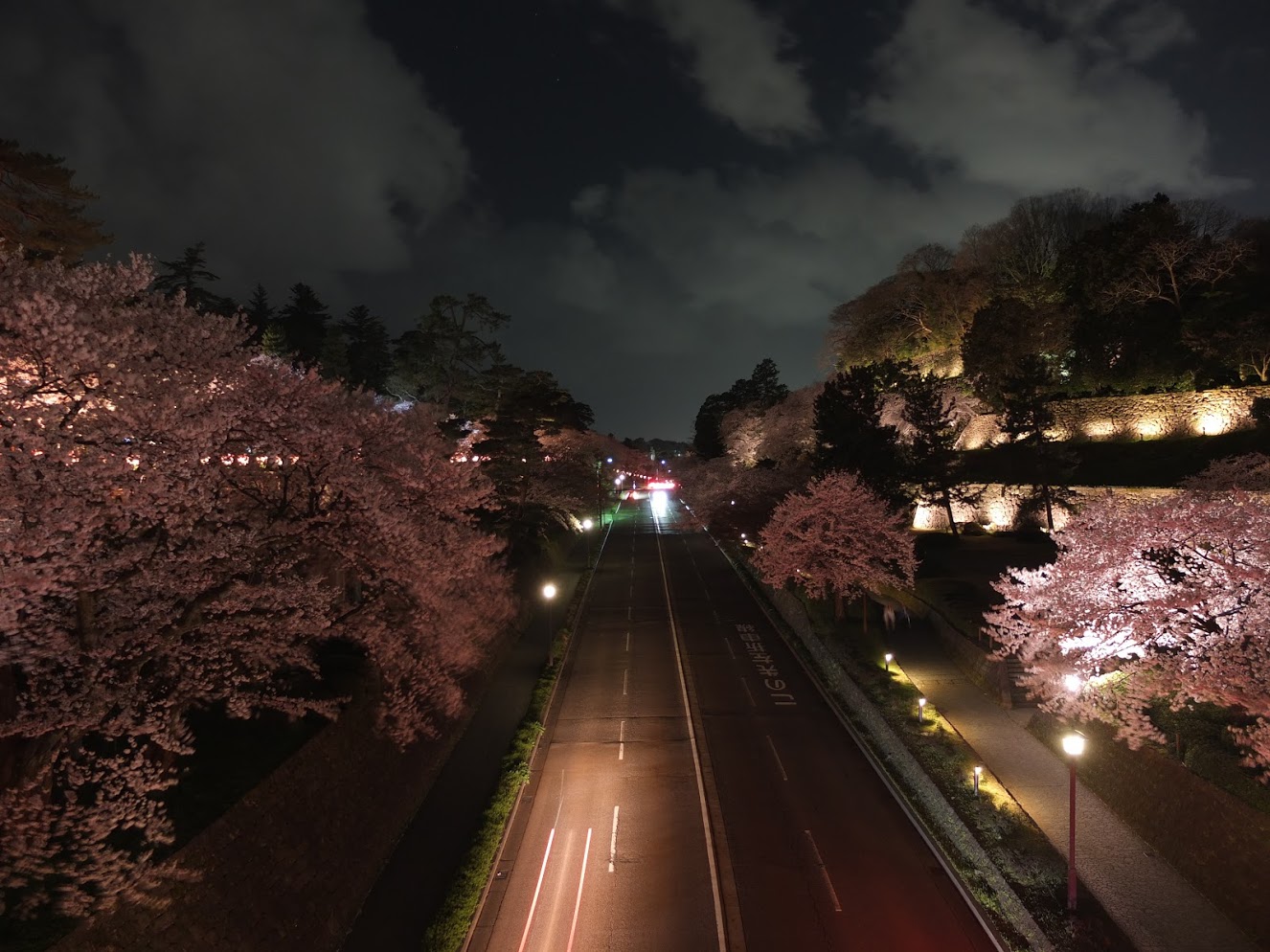
The castle moat was covered with cherry blossoms. Above, below, the flowers were endless. I had lost all words and minds. All I knew was no pictures can possibly capture what was before me.
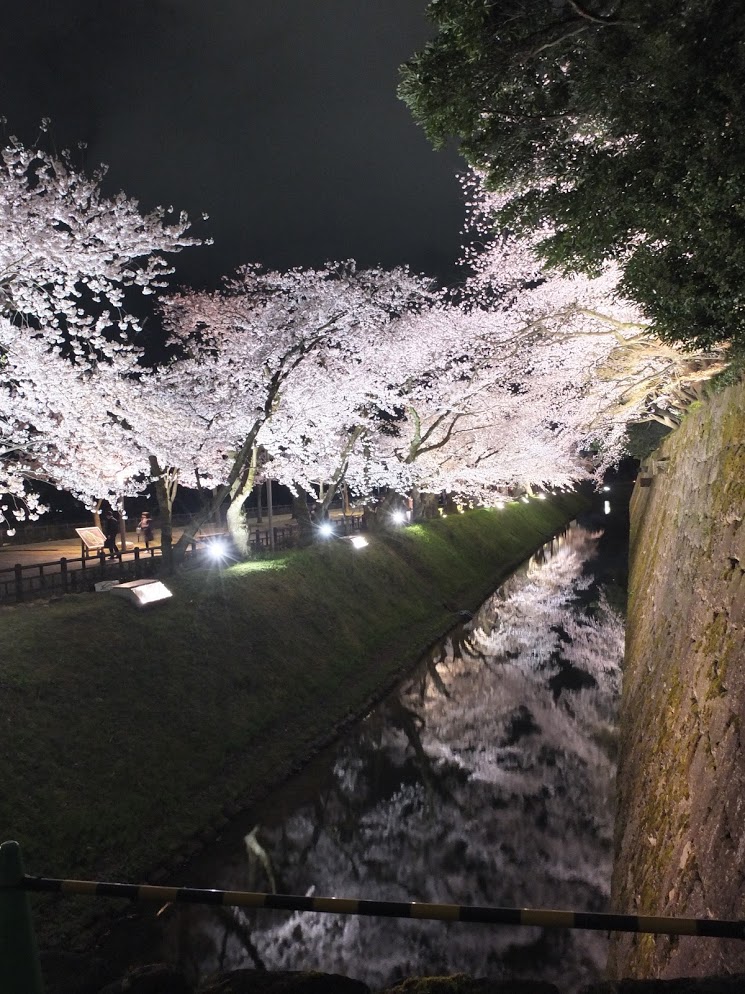
After I don’t know how long, I eventually made my way back to the hotel, just when it slowly began to drizzle. The weather knew I was finished with the day.
About half a block from the hotel at the intersection was a convenience store, where I grabbed some instant coffee and bread for snacks and plum wine for sleep, and a small neighbourhood supermarket, where I grabbed some oranges, an expensive but necessary supply to balance out all the savoury food to be consumed over the next dozen days.
First day, already more perfect than I had thought possible.